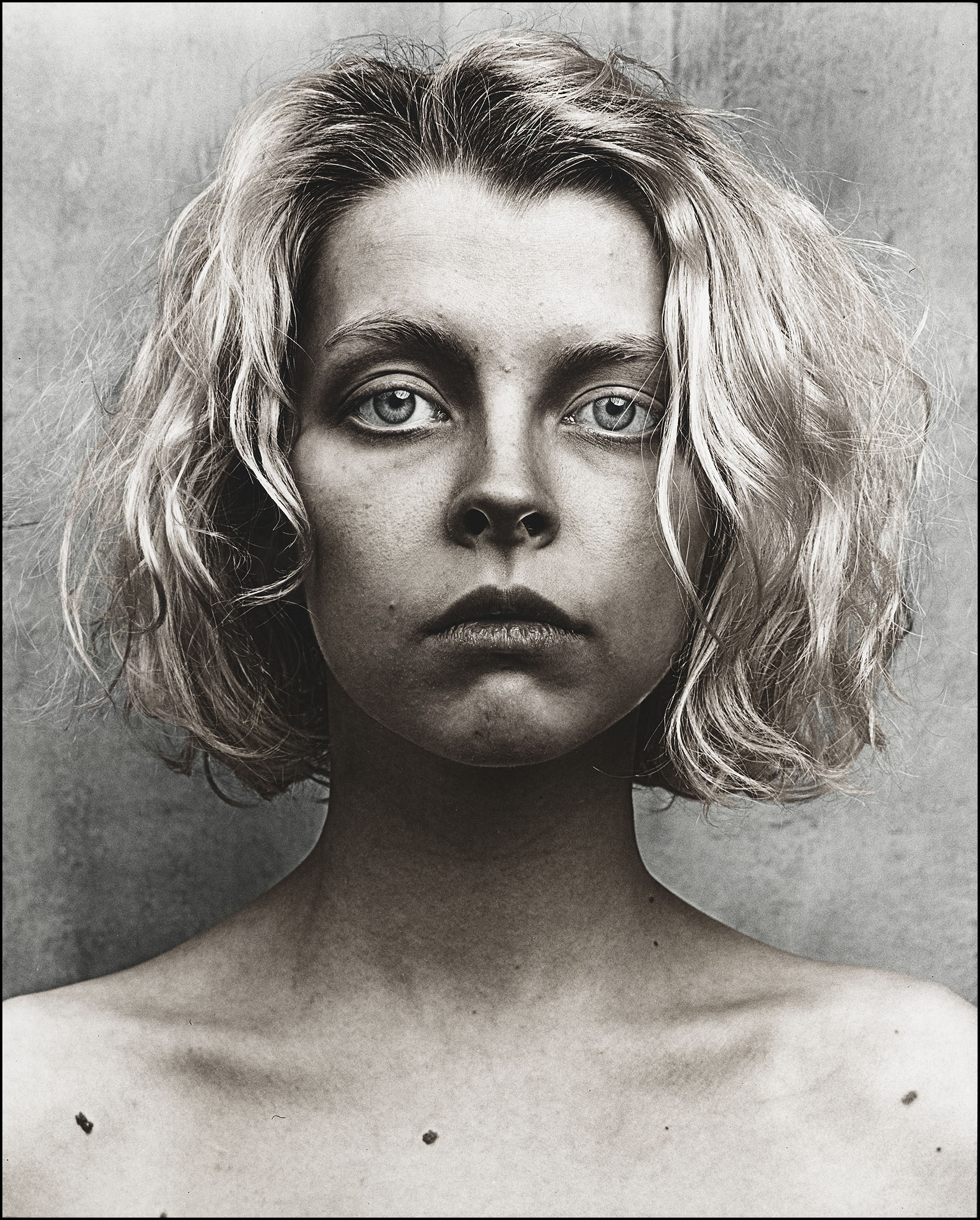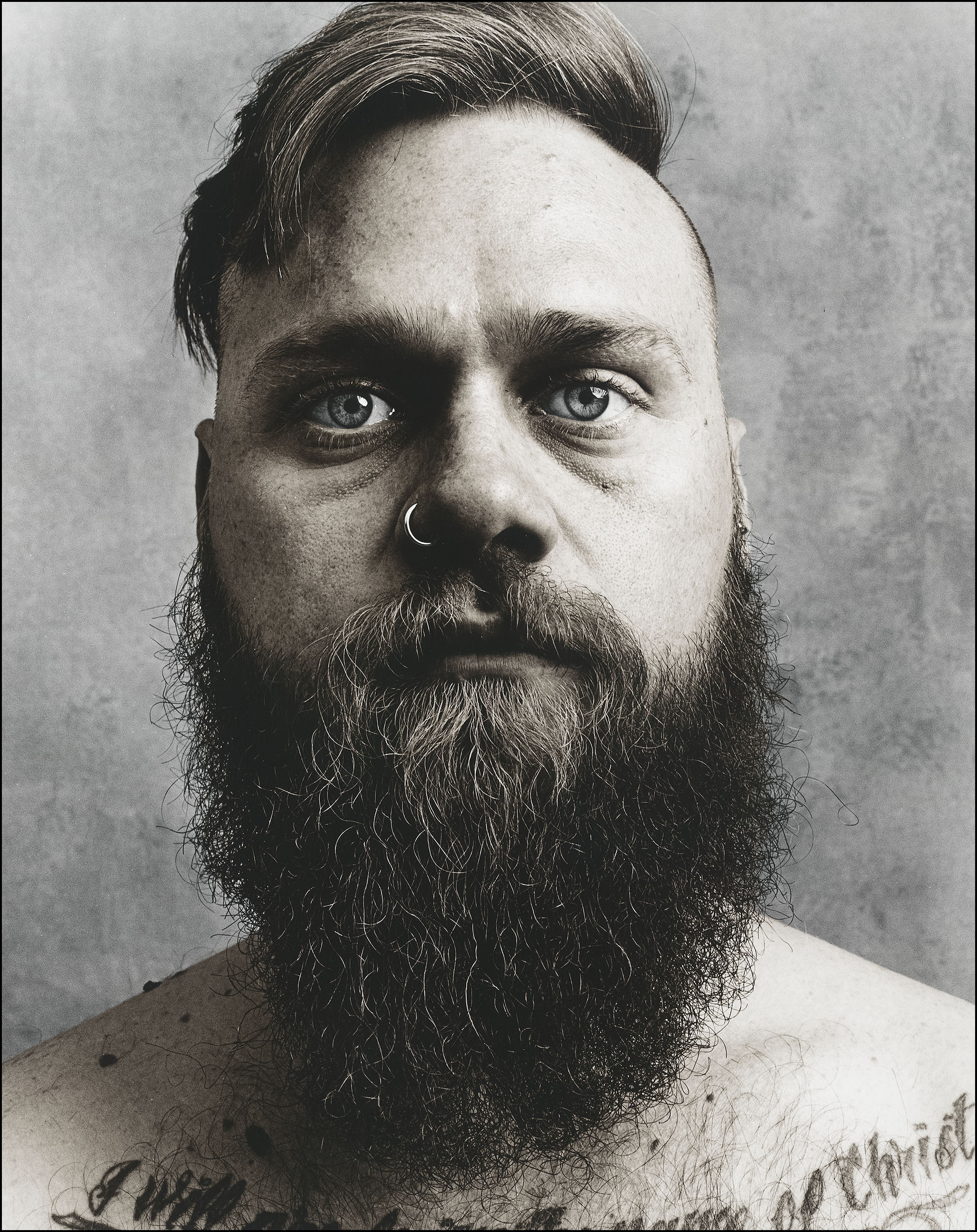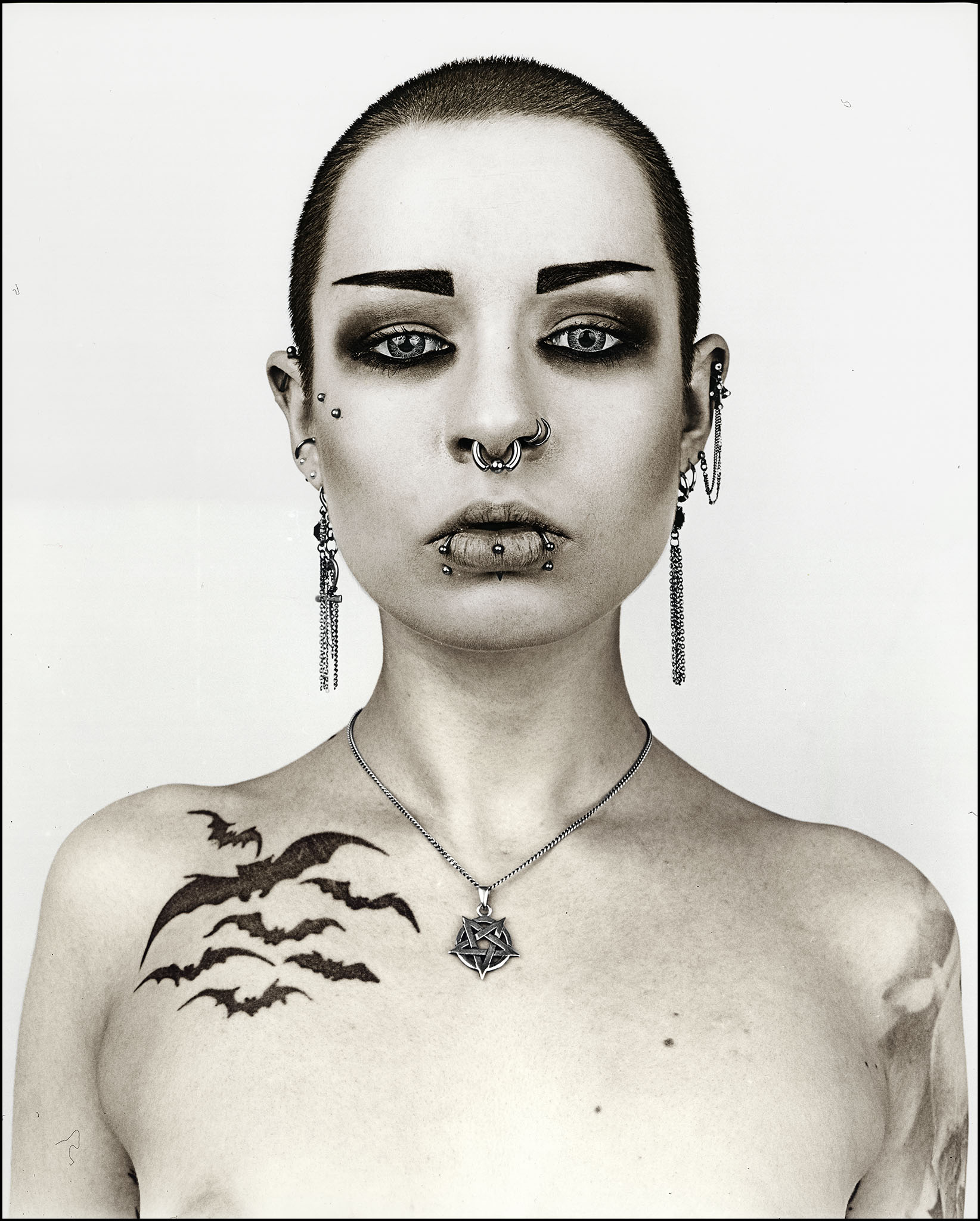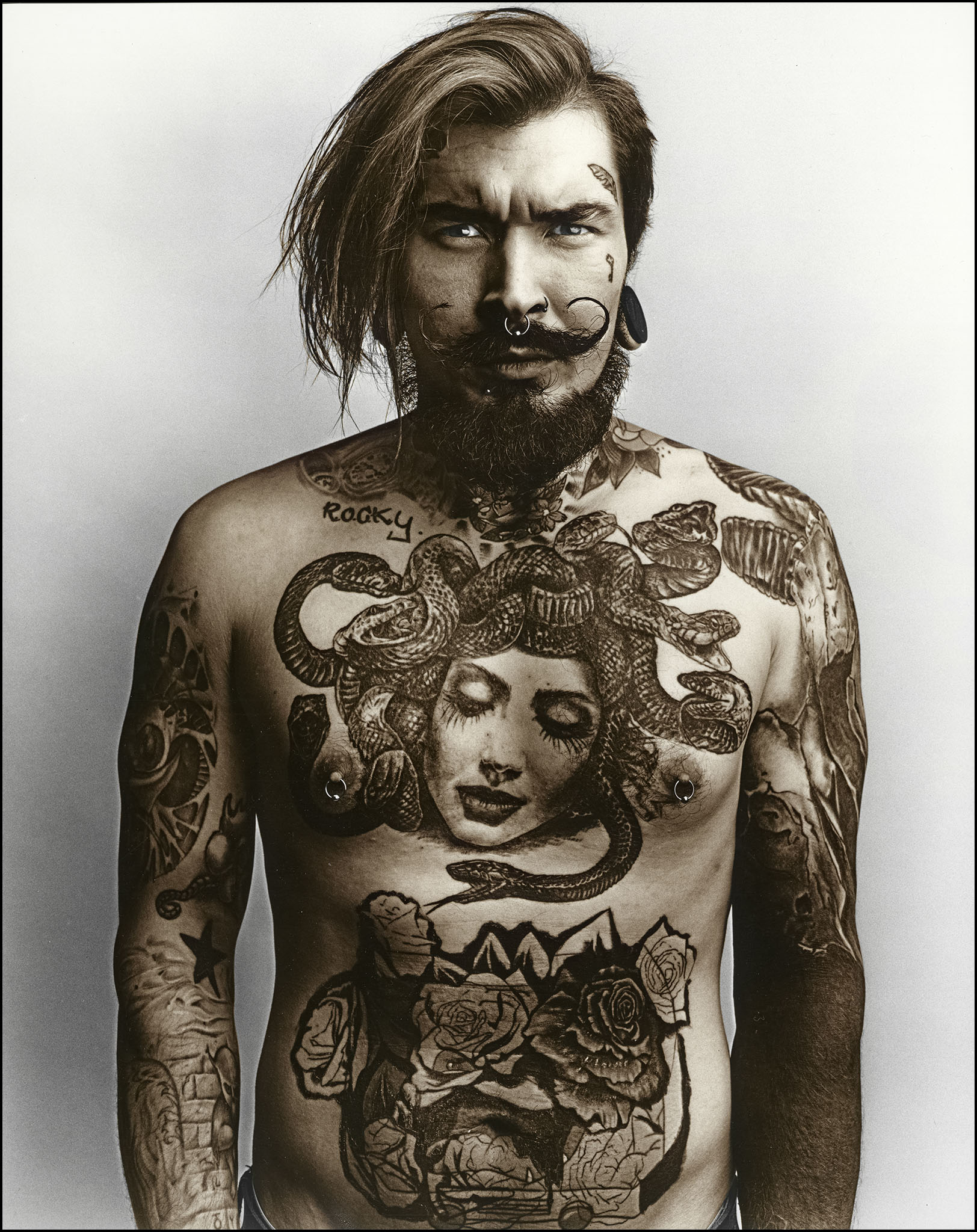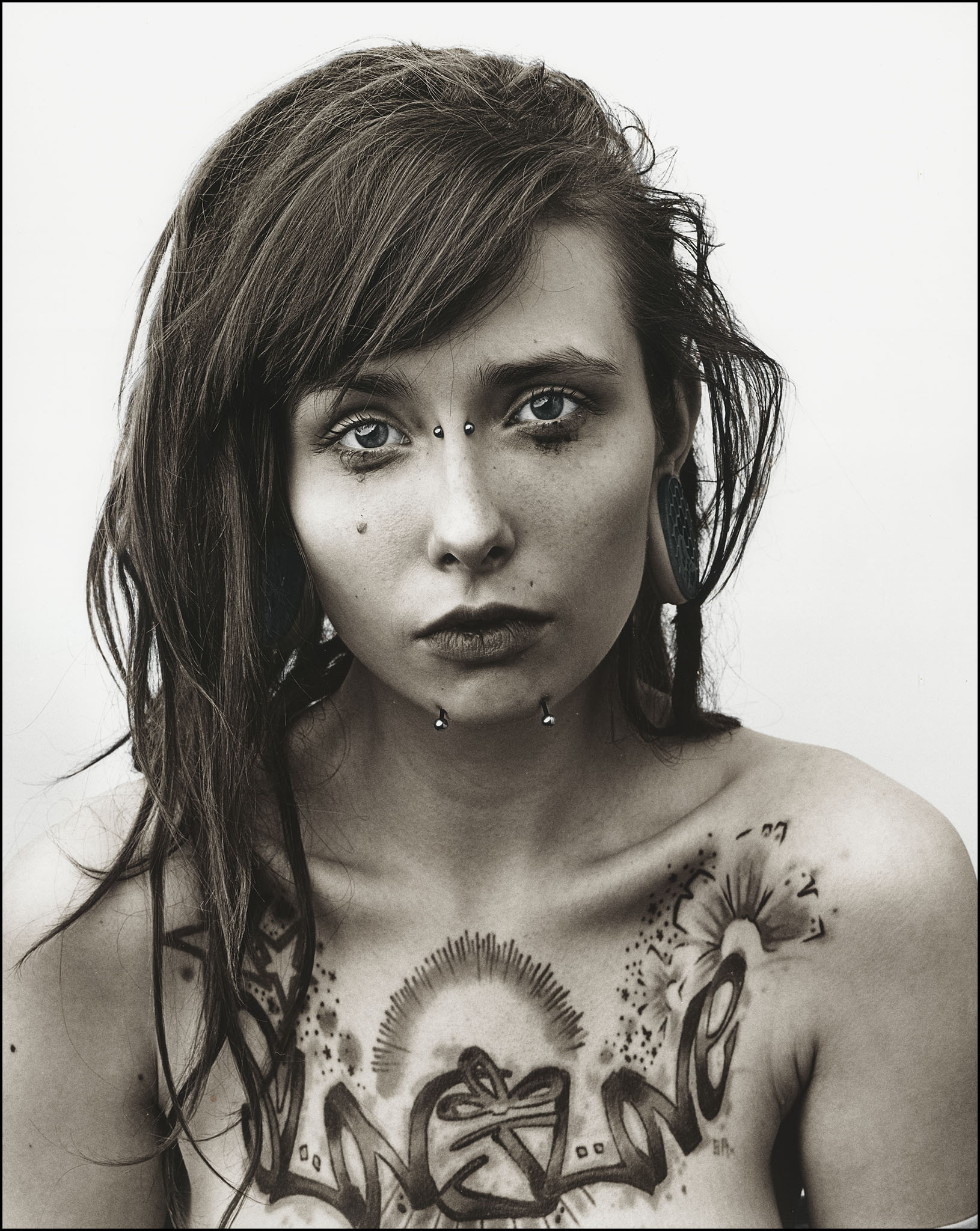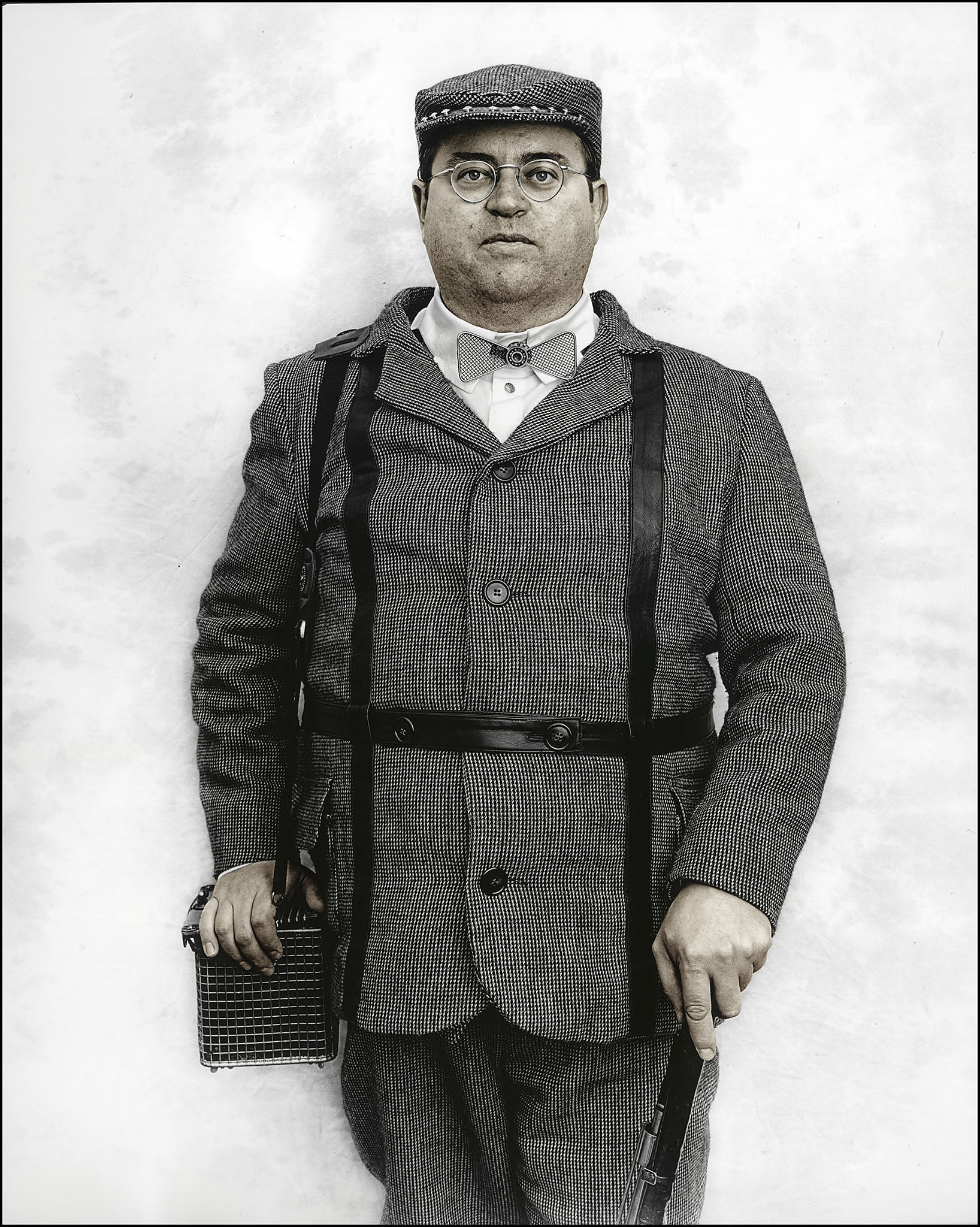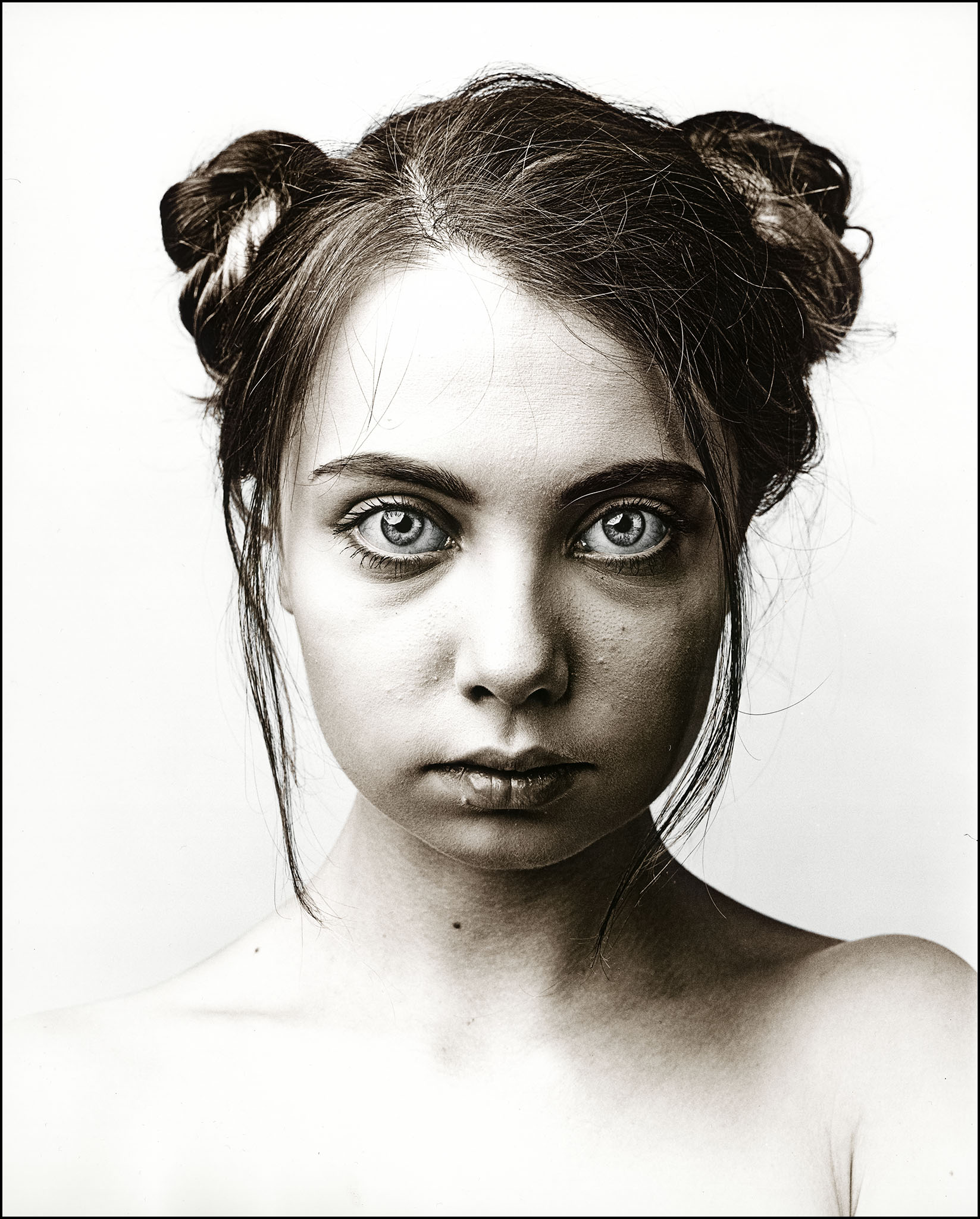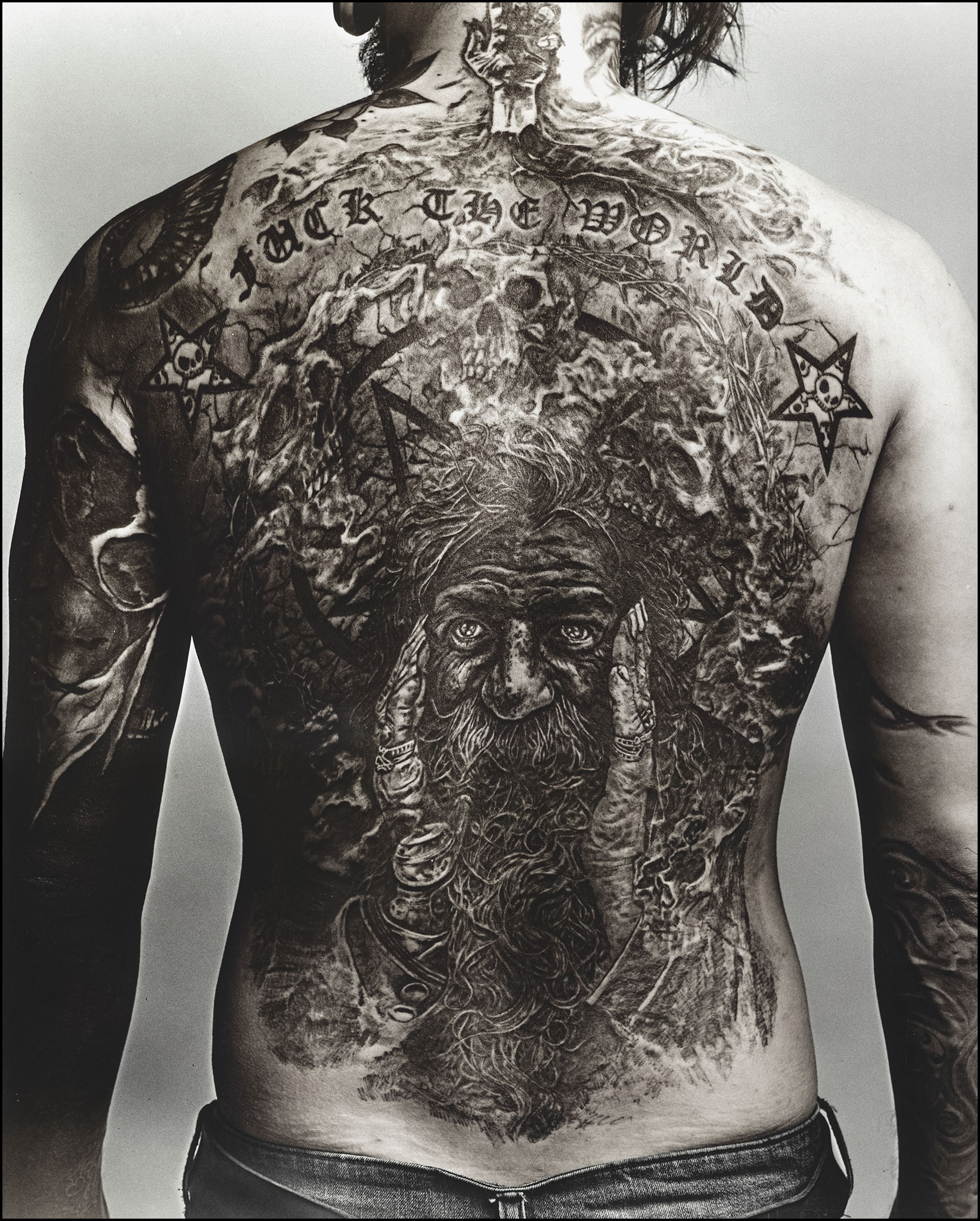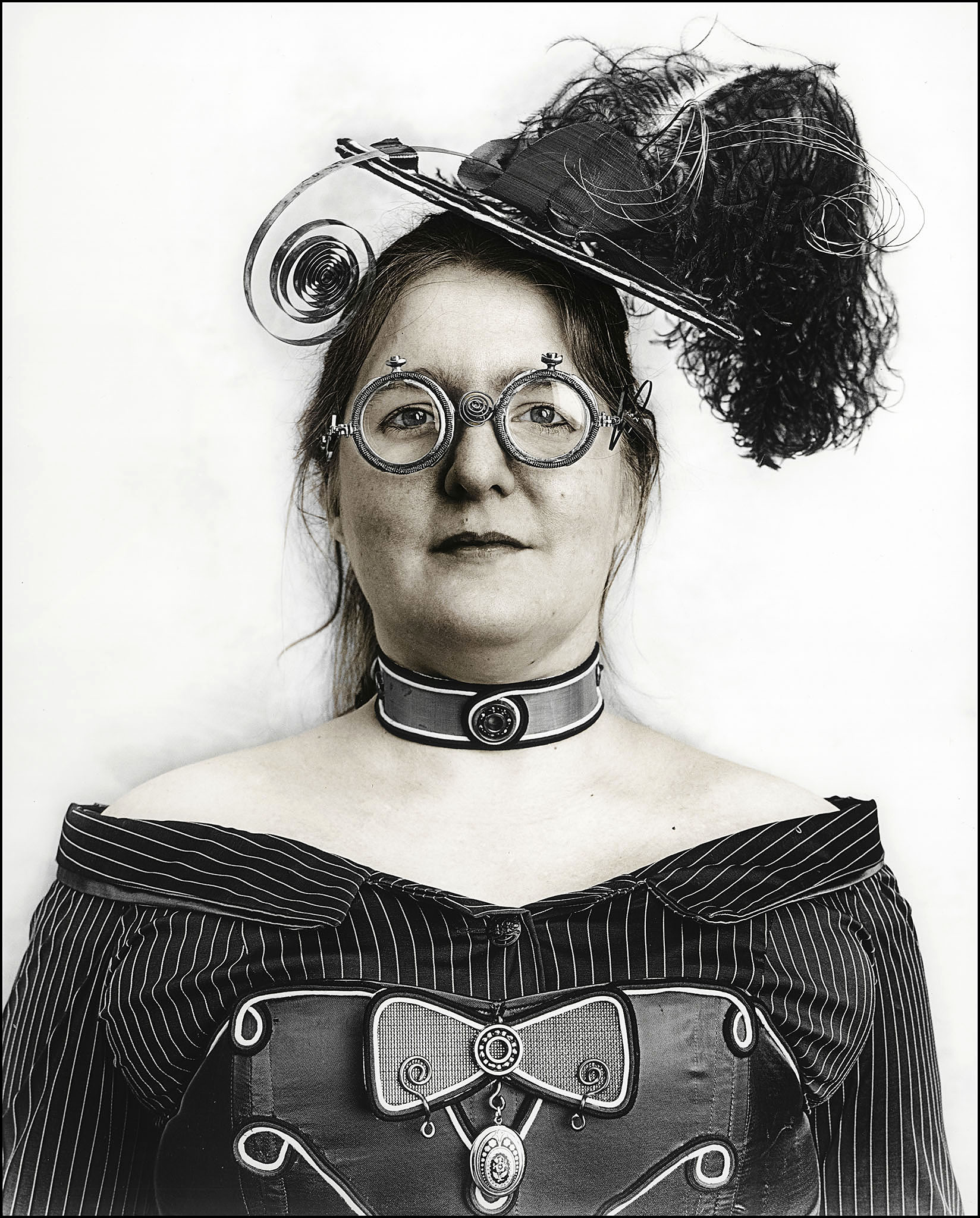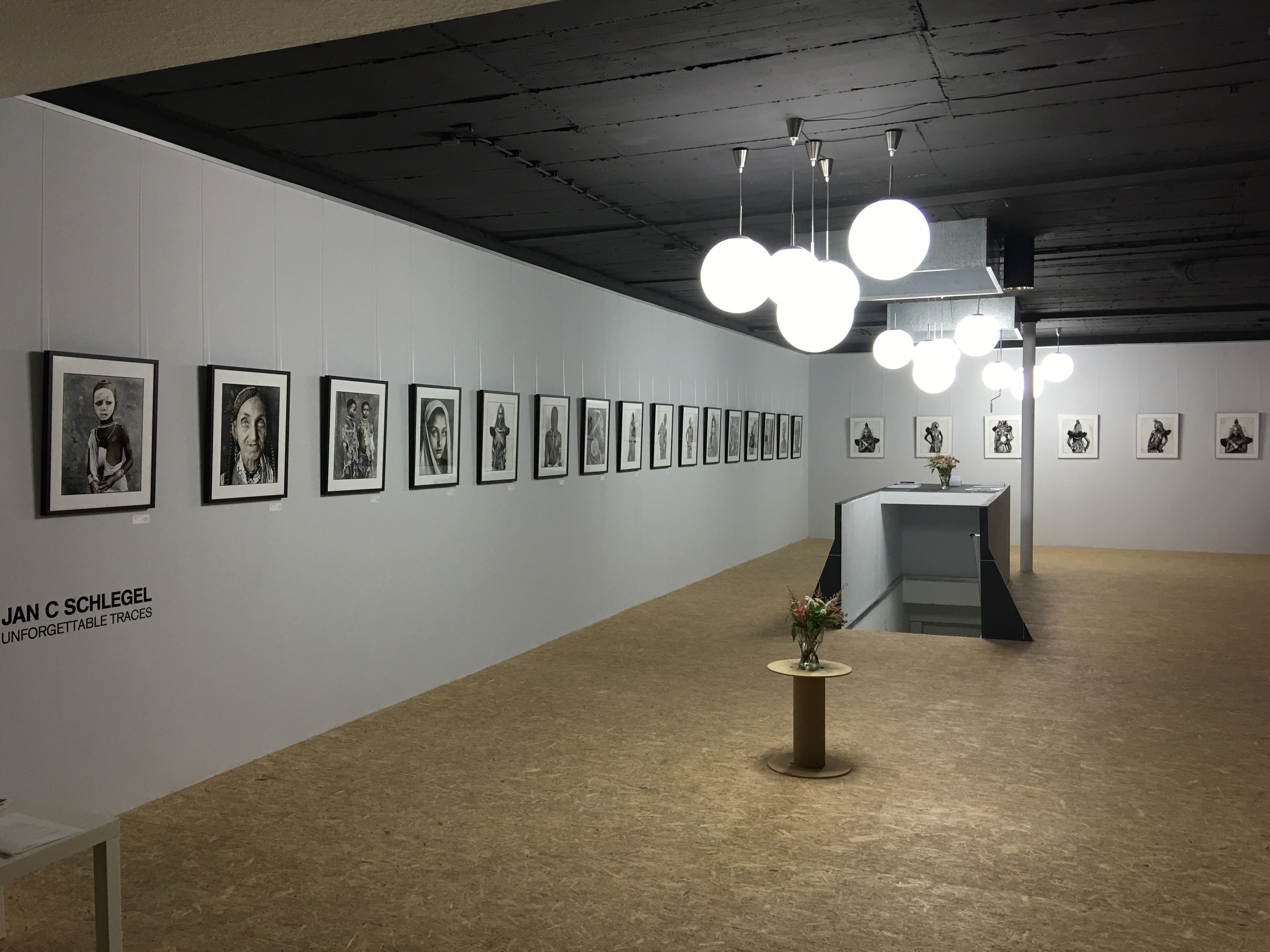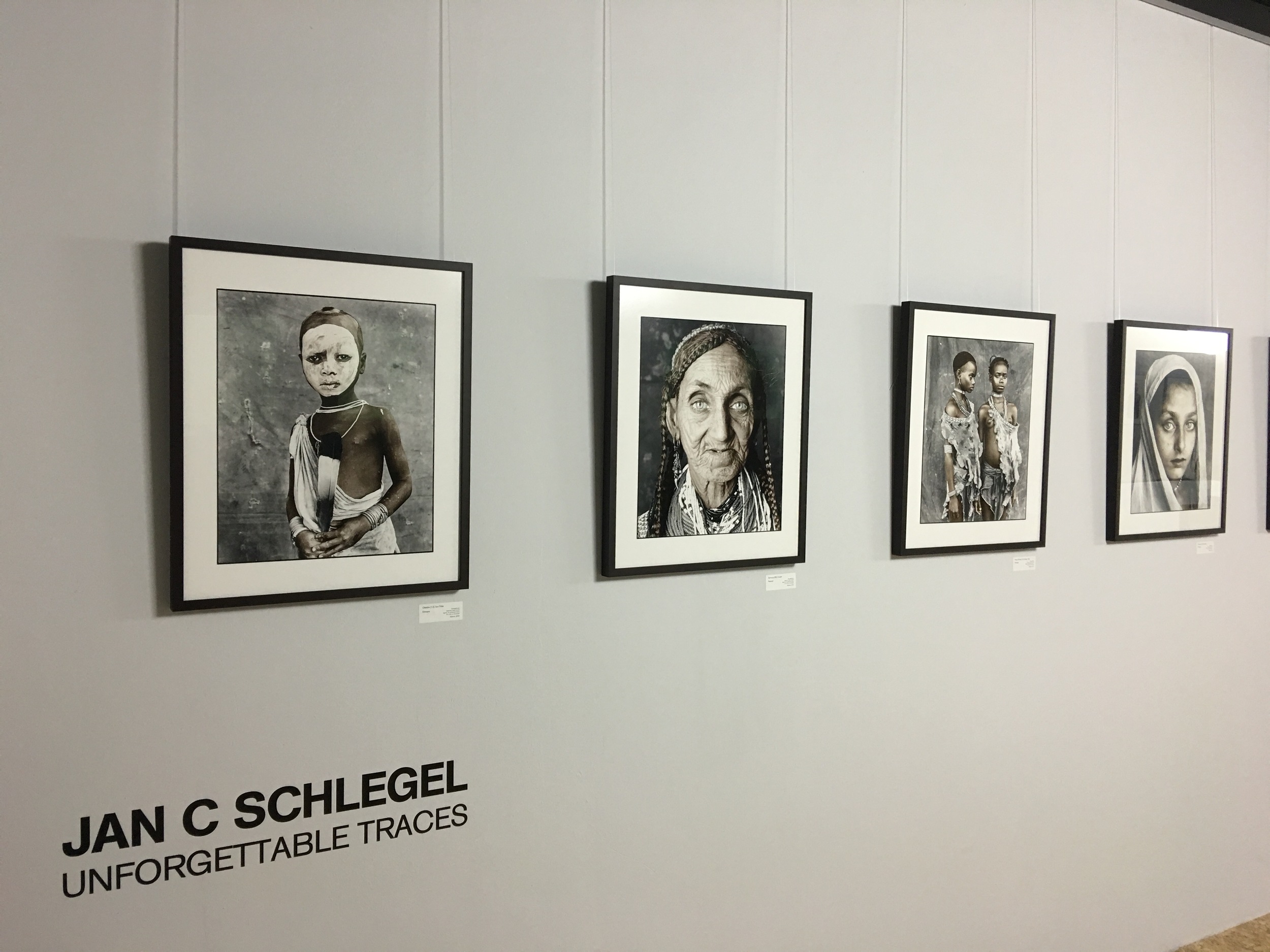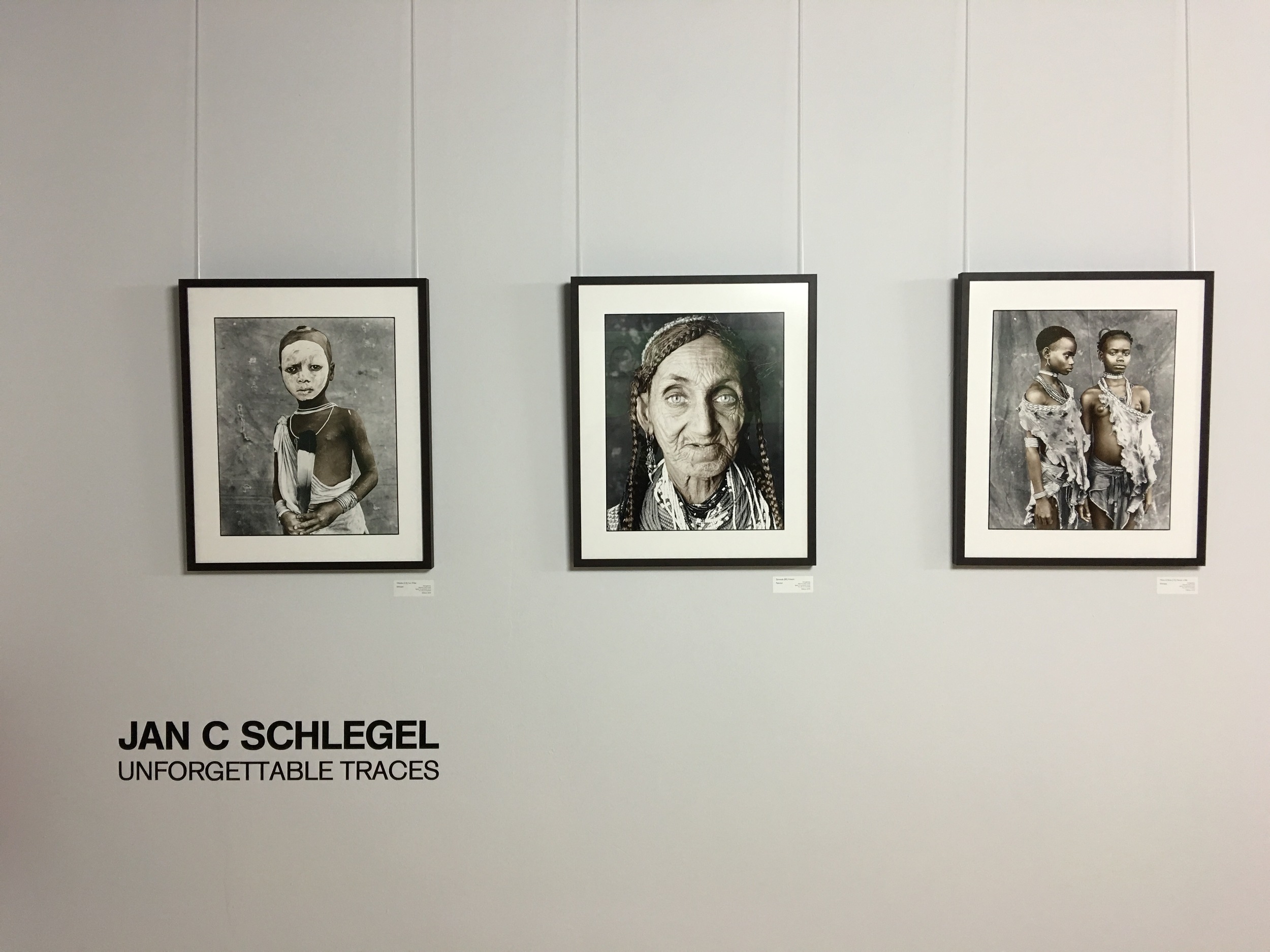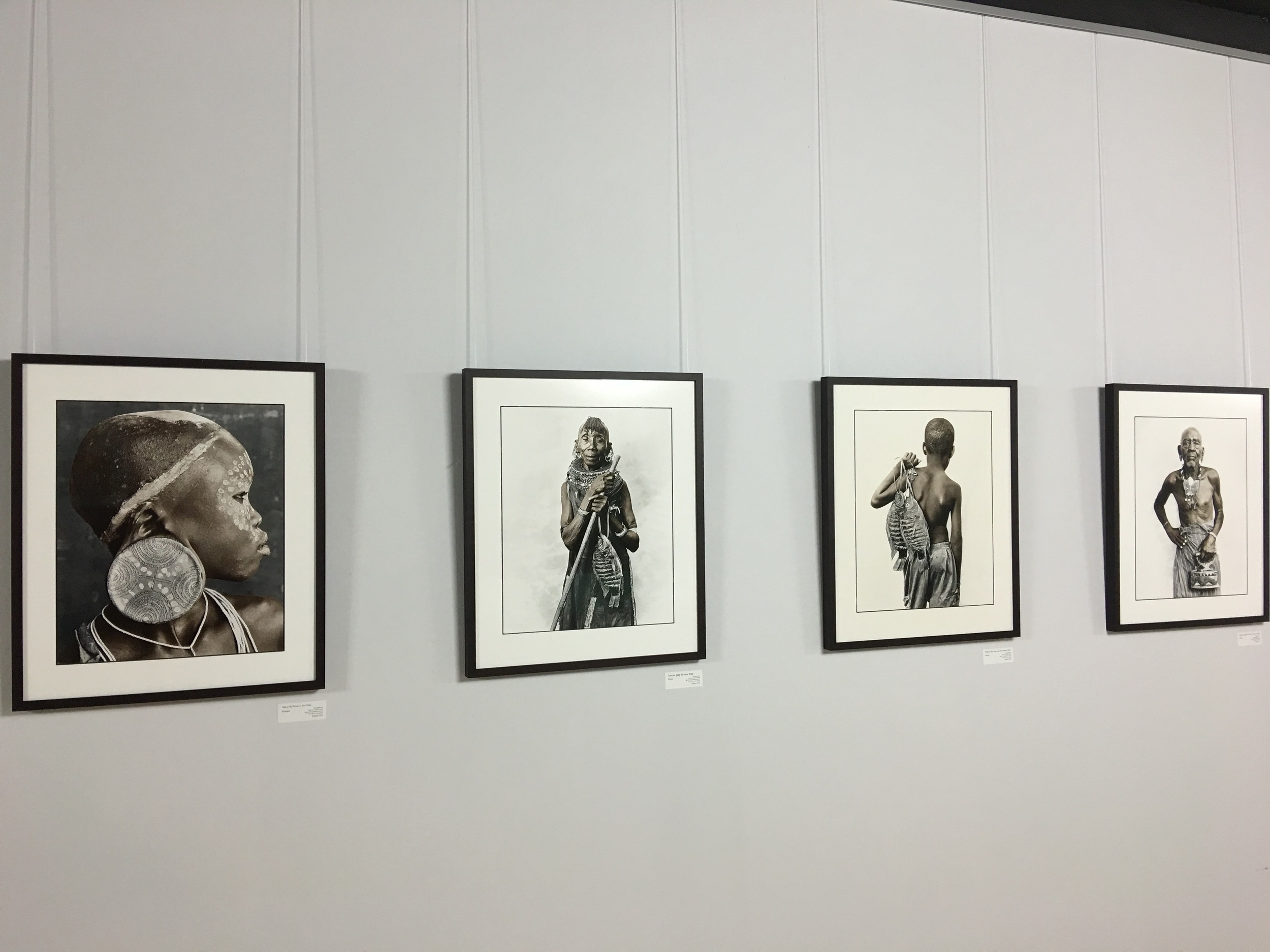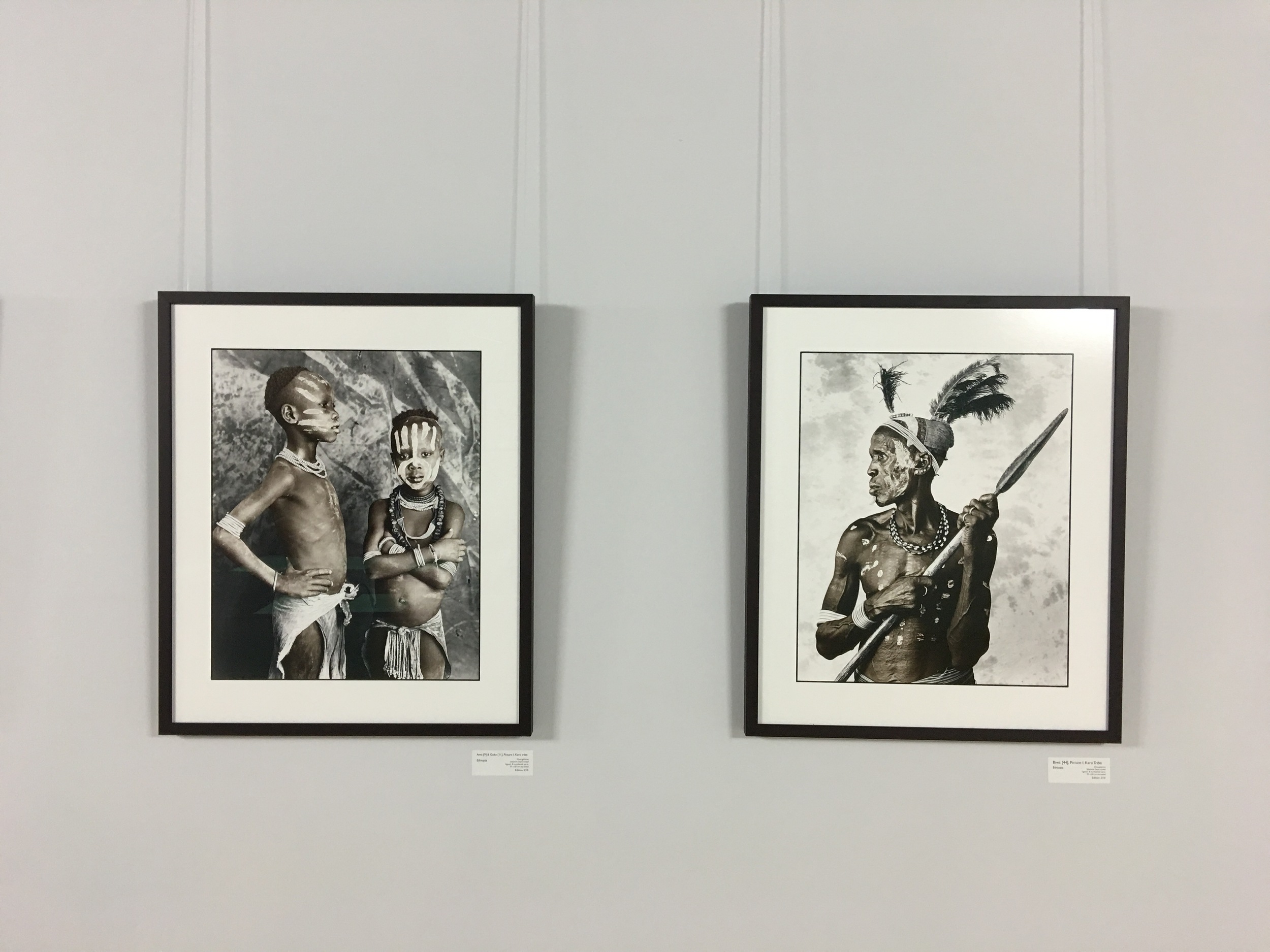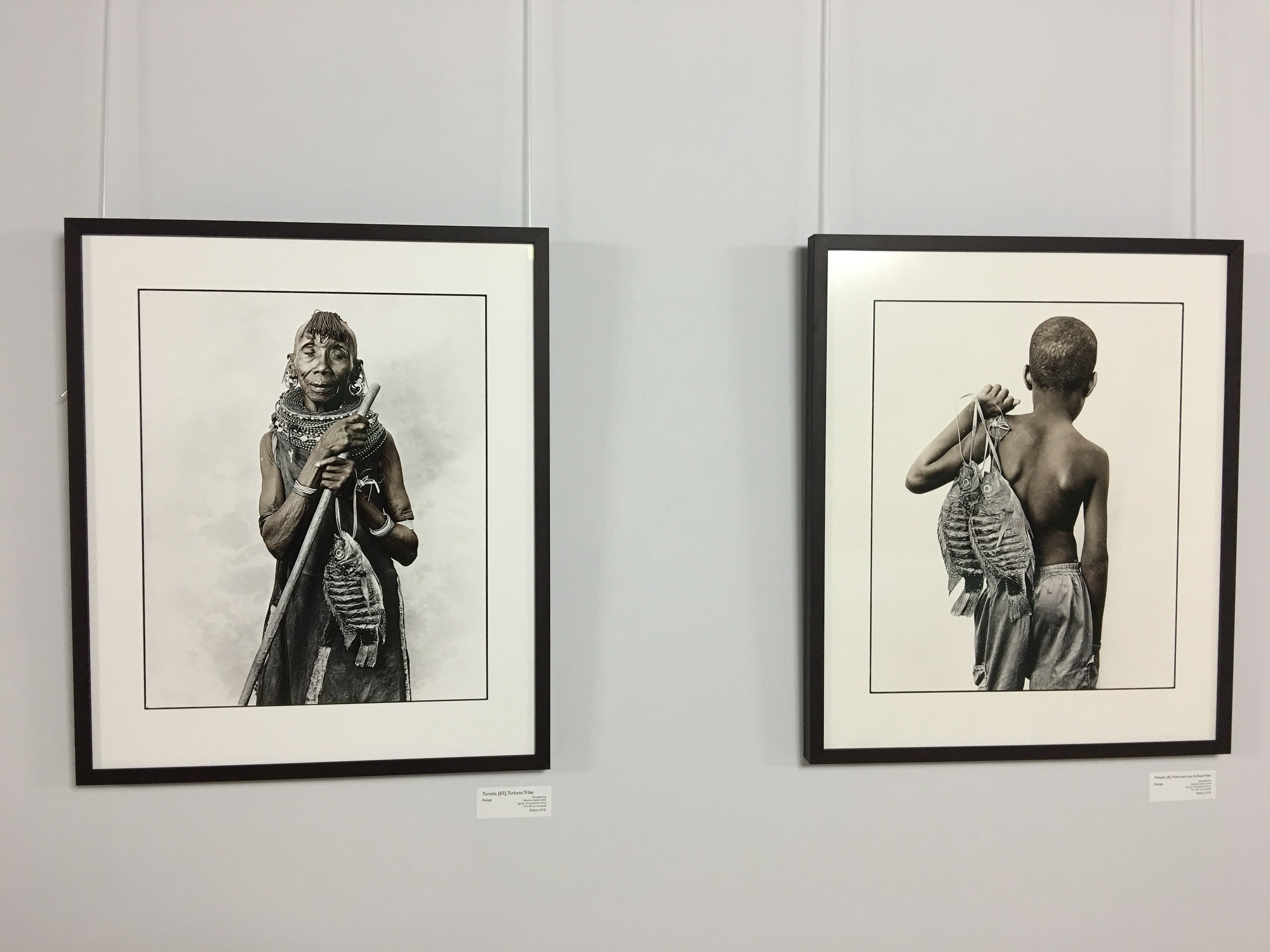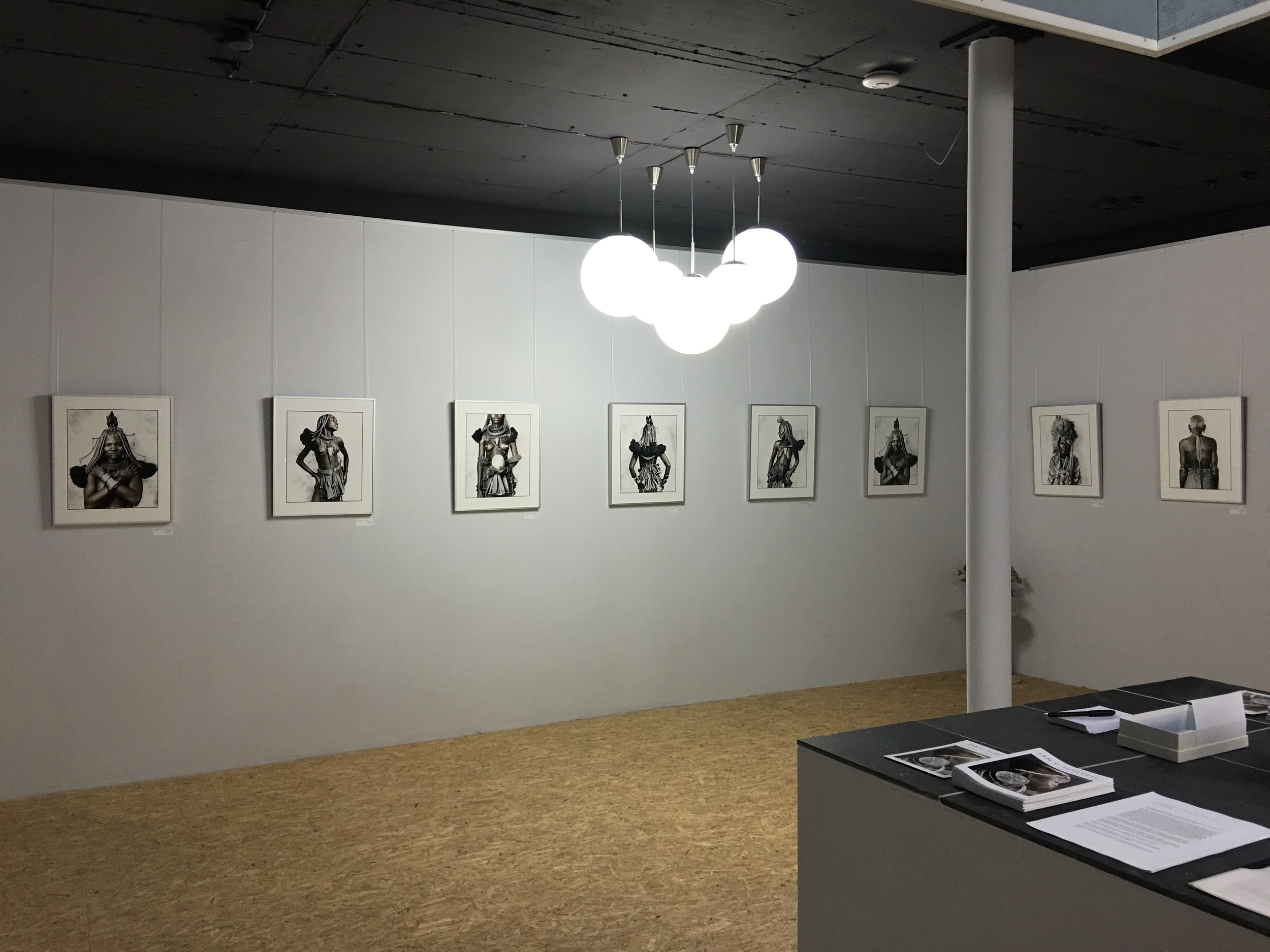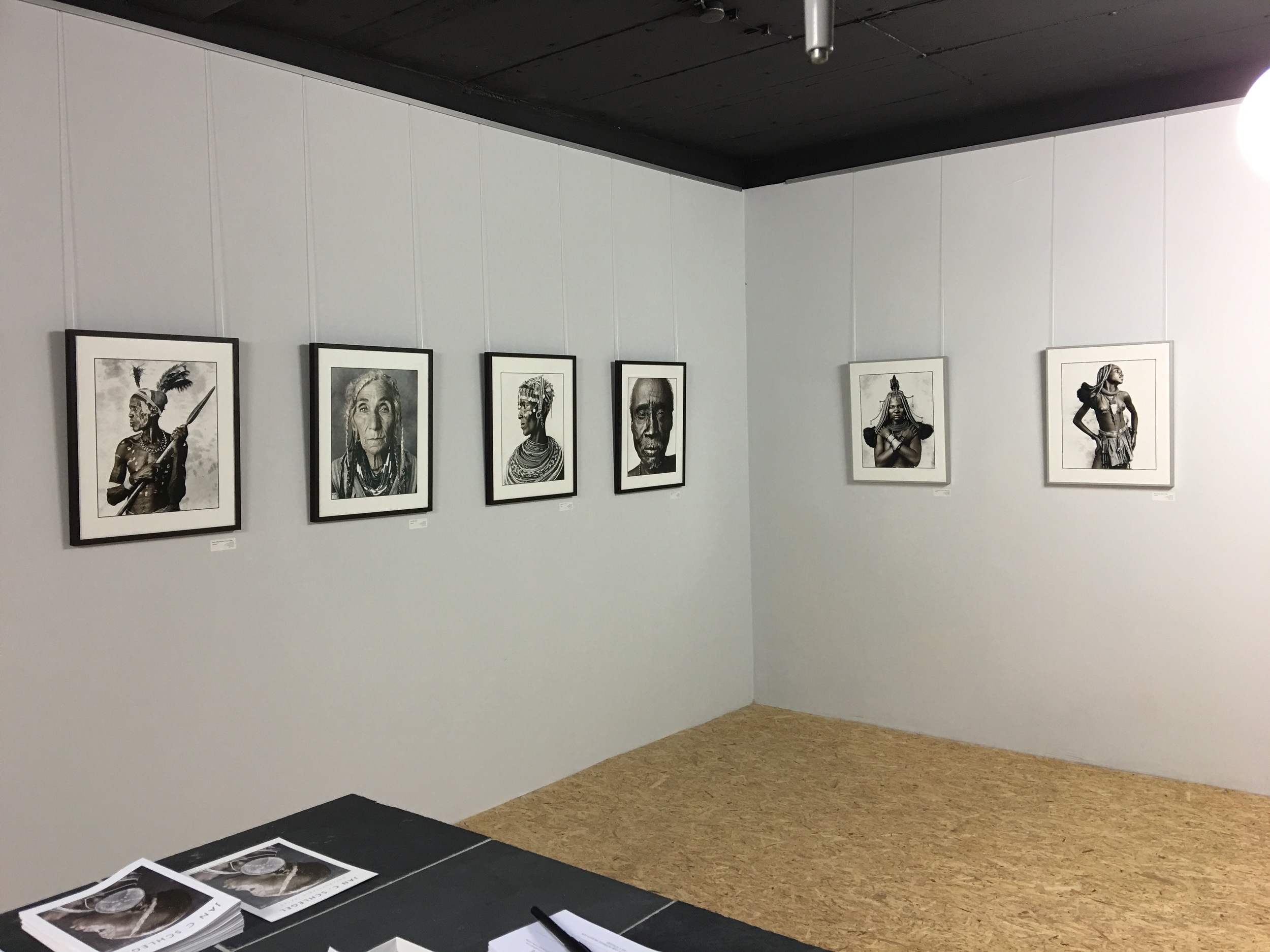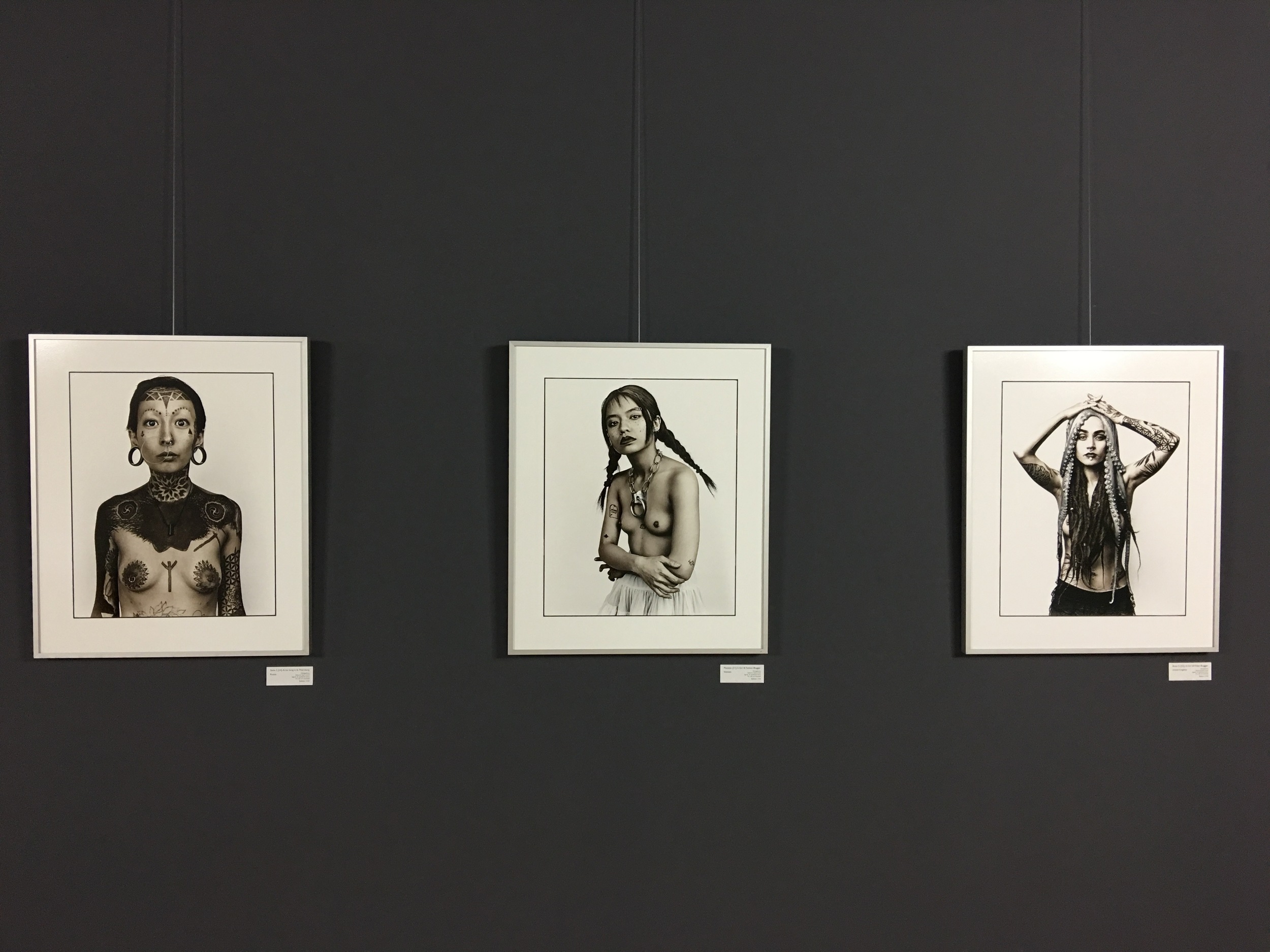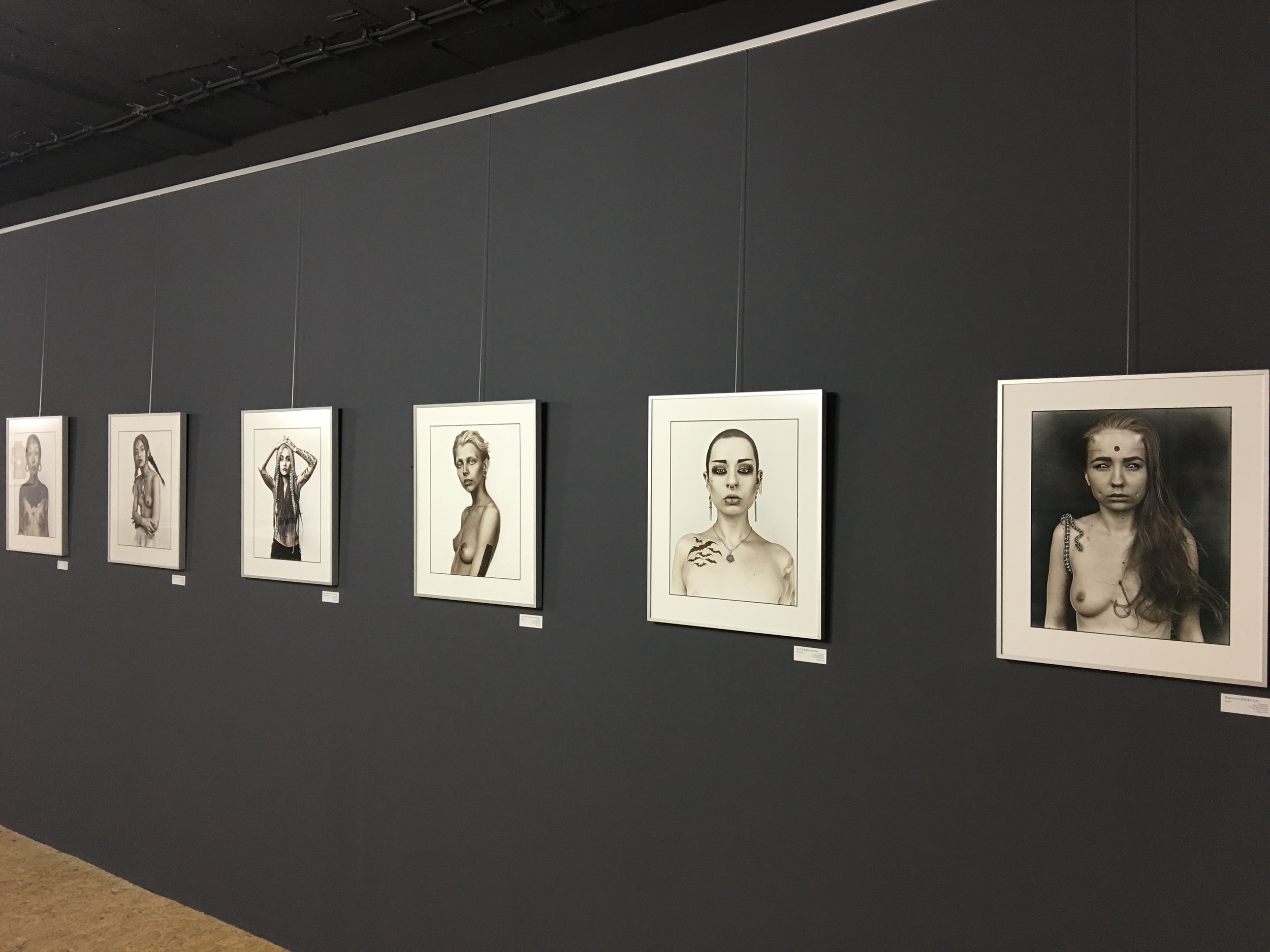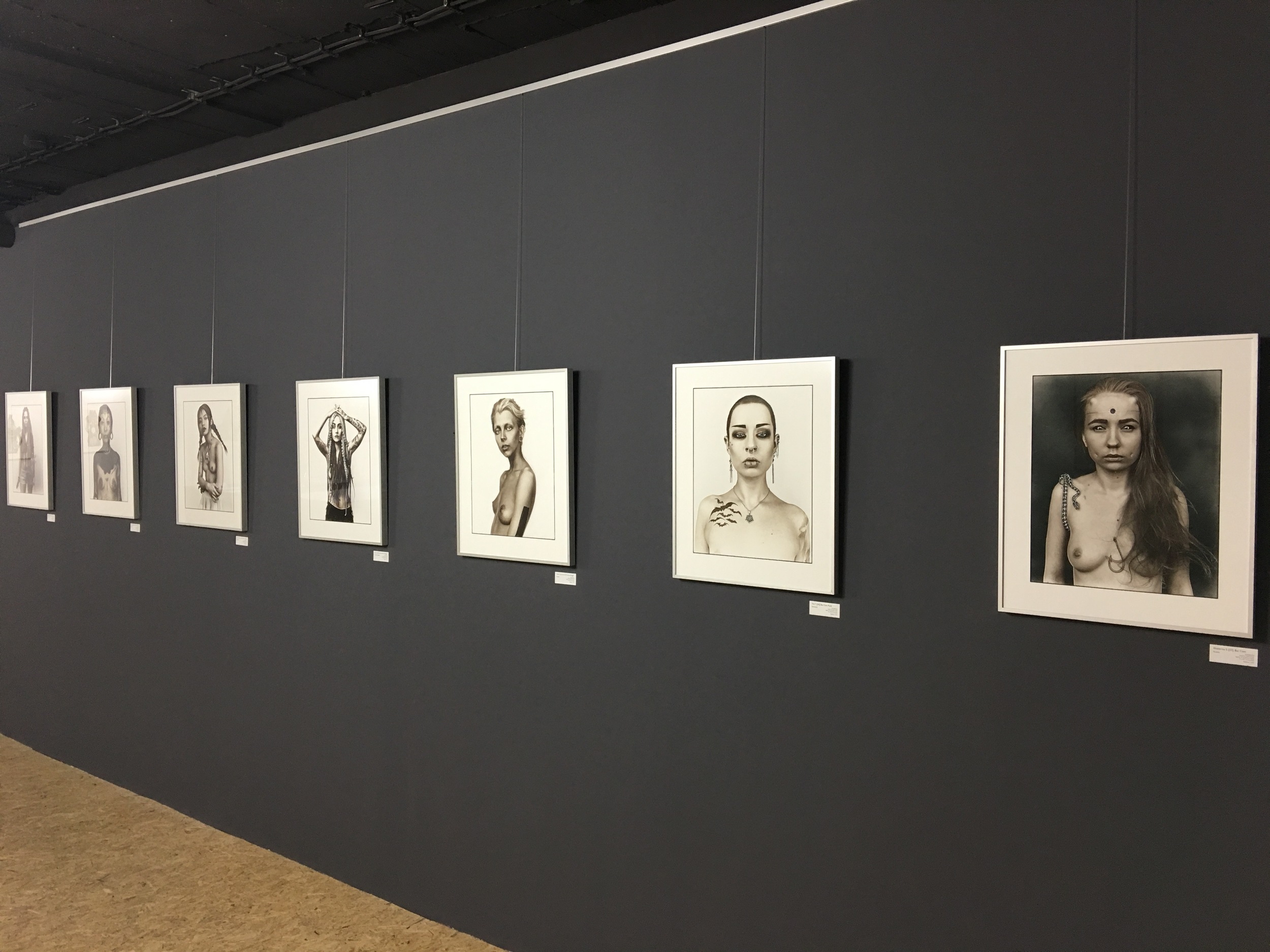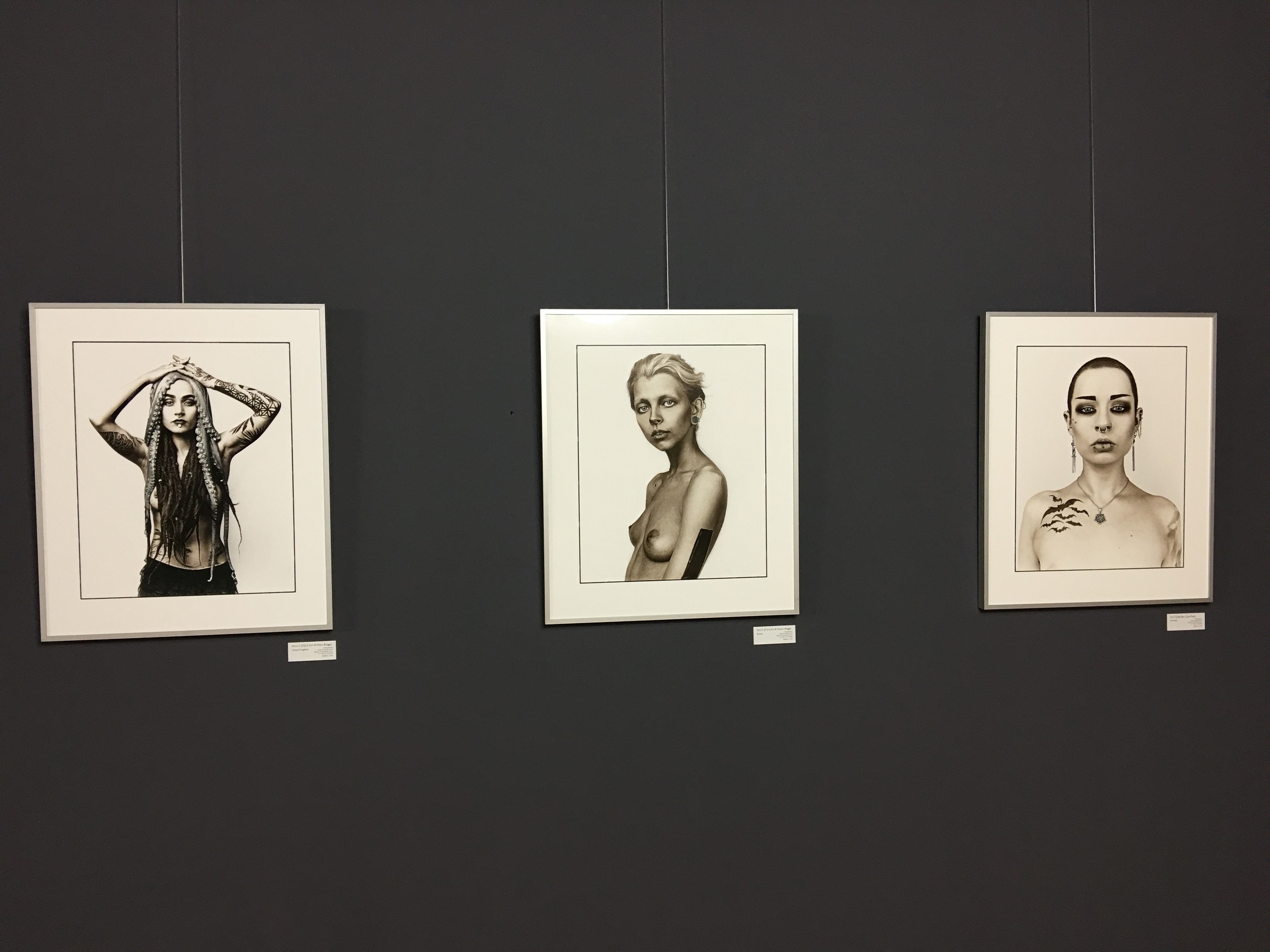INVITATION TO THE EXHIBITION „PURE"
REVELATIONS IN SILVER · PL·ATINUM · IRIDIUM · RHODIUM
BY JAN C. SCHLEGEL
His works are a reminiscence of the original genre of photography and at the same time a renaissance of old artistic photographic craftmanship, which is able to combine two features: achieving the highest quality and capturing the beauty for eternity.
»A good photograph is one that communicates a fact, touches the heart and leaves the viewer a changed person for having seen it.«
This sentence from Irving Penn, one of the most influential photographers in recent history and reinventers of the platinum printing process in the sixties, Jan C. Schlegel often refers to when he speaks about his works. Pushing the boundaries of his medium he asks universal, existential questions about identity, beauty and the uniqueness of every living being in all their details, shapes and structures. Furthermore, he has mastered the art of photography - by studying, analyzing and exploring. As a result of his way of approaching his subjects, he is able to create almost surrealistic portraits by focusing on the essence of things with remarkable deepness.
We are very excited to exclusively present four of his most important series to a small exclusive circle of collectors and friends of photography for the very first time:
ESSENCE, CREATURES OF THE SEVEN SEAS, OF MONSTER AND DRAGON, THE TRIBES OF OUR GENERATION, MUSES – HOMAGE TO AUGUSTE RODIN
Expect an evening with new impulses, unlocking new perspectives and unique art of photography that sets new standards.
It would be a great pleasure to welcome you on Thursday, October 10th 2019.
IMMAGIS FINE ART PHOTOGRAPHY
Blütenstrasse 1
80799 München
Germany
"WHAT PHOTOGRAPHY CAN DO" E-Magazine No. 5, August 2019
My Photography Newsletter February 2019 is ready to download
Neu! Flyer mit den Workshops in Deutsch jetzt bereit zum download.
Upcoming exhibition at van der Grinten Gallery Cologne.
I am exited to be part of the group exhibition "A sight to behold". Come to the opening November 23rd, 18:00h - 21:00h. I will be there.
Jan C Schlegel Photography Newsletter No. 3 (November 2018)
Pressetext: Ausstellung in Nürnberg/Germany
EINLADUNG ZUR ERÖFFNUNG
DES KUNST-FÖRDERVEREINS „WHITE RABBIT ARTS COLLECTIVE E.V"
UND ZUR AUSSTELLUNG
„THE TRIBES OF OUR GENERATION“
VON JAN C SCHLEGEL
6.10.2018 von 14:00 bis 18:00 Uhr
Fischbacher Hauptstr. 228, 90475 Nürnberg/Fischbach
Nach großem Erfolg in Oslo/Norwegen, werden zum ersten Mal die Bilder von Jan C Schlegel aus Nürnberg aus der Serie „the tribes of our generation“ in Deutschland gezeigt.
Jan C Schlegel fotografiert mit einer Großformatkamera nach traditioneller Technik auf SW-Film. Er entwickelt alle seine Bilder selbst und tont sie nachträglich in einer aufwändigen manuellen Technik. Seine Bilder zeigen intensive Portraits, die sich mit dem Thema Identität und Schönheit in Zeiten einer immer schneller werdenden Globalisierung beschäftigen.
Schlegels Serie „Essence“ wird auf internationalen Kunstmessen und Ausstellungen (zur Zeit in St. Petersburg/Russland) mit großer positiver Resonanz gezeigt. Er wird durch namhafte Galerien im In- und Ausland vertreten.
Schlegel ist einer der Gründer des „White Rabbit Arts Collective e.V.“
Veranstaltungsort: Fischbacher Hauptstraße. 228, 90475 Nürnberg. Telefon 0171-6155354
Website: www.jan-schlegel.com
Instagram: @janschlegel
Beautiful exhibition in St. Petersburg
I just had such an amazing time in St. Petersburg/Russia at the Art of Foto Gallery. This is my first exhibition in Russia and I am amazed how well visited the exhibition is. Also the team of Art of Foto was doing such an amazing job in setting up the exhibition. Art of Foto is especially dedicated in showing classic analog photography developed in the darkroom. I am inspired by their passion for quality and love for details.
Here now a few pictures of the exhibition.
Download the "Jan C Schlegel Photography Newsletter"
To share a little bit more about my Photography, upcoming events and workshops, the development of my projects, technical processes of the darkroom or how I take pictures, I started a newsletter. It is free and whenever I have something interesting to share I send it to those that are interested. The 2nd one is finished and was already send to about 800 people. If you are interested to receive it in the future please sign up here for it. The last one you can download here.
Exhibition in St. Petersburg/Russia
A selection of my “Essence” Series will be exhibited in St. Petersburg at the beautiful Art of Foto Gallery in downtown from September 20th to November 25th 2018.
You are invited to celebrate with us the opening in that prestigues Gallery at September 20th 2018 at 18:00h.
Art of Foto Russia
Bolshaya Konyushennaya 1, 191186 St. Petersburg, Russia
Phone: +7-812-312-2856
Email: info@artoffoto.com
Internet: www.artoffoto.com
Invitation card in Russian language.
Unrestricted access to "the tribes of our generation" pictures and development
So many have asked me how they can have a look at my new series "the tribes of our generation. The project is still in development but almost completed. If you want to see the pictures and how it develops visit https://www.patreon.com/jancschlegel. At my Patreon site I am also offering personal analog photography training (through Skype or in person) and share some insights trough tutorials, videos and other stuff.
End of the year 2017 newsletter
Dear Friends,
I believe that art conjures that moment when something very personal enters the realm of the shared human experience. As such, I want to share my life through visuals of what I myself have seen, and am therefore deeply passionate about in a way that transcends the moment. In this way I seek to propel the viewer into a moment that will ultimately impact them such that they will more fully engage the world about them, and do so compassionately and selflessly. This I do in the hopes that the viewer will enter the realm of collective understandings about the human race, and thereby, lift the veil of the everyday and mundane in the quest for those deep connections that unite all of humanity.
At the beginning of the year I was granted the honor and privilege of exhibiting my newest creations, a series titled The Tribes of Our Generation at the amazing Willas Contemporary art gallery in Oslo, Norway. It was quite an experience for me to view the exhibition in the gallery rooms at Willas. Some pictures were displayed in my standard 50 x 60 cm frame size, but a select few were exhibited in a 1.25 by 1.04 meter format. One of the larger prints on exhibit in Oslo was that of Yana K. from St. Petersburg, and this image was installed so as to be viewable from the street. The print was such that it drew passersby into the gallery, and so it was that a woman entered the gallery in order to more closely inspect the image of Yana. The gallery owner subsequently shared the observation that the woman was so awestruck by the beauty and power of the image that she stood transfixed and mesmerized for a considerable time. In so doing she acknowledged being so overcome that she felt “goose bumps,” and this by virtue of the fact that the image of Yana elicited an otherworldly feeling that the woman remained hard-pressed to explain. This in turn prompted her to make a phone call so as to alert her husband. Shortly thereafter, the woman’s husband entered the gallery and he too experienced the same reaction, thereby prompting the two to acquire the photograph from the gallery.
Picture of Yana K. at the exhibition at Willas in Oslo
Later, I met the husband who promptly proceeded to ask a host of questions about the image in question, Yana, myself, and my photography. As he himself noted, he was determined to find out why the picture of Yana touched him so deeply. He said, “the picture is beyond beautiful, and it shares something very personal about you and how you see Yana.” That’s what photography is all about; it is a reflection of my way of seeing the world, and that language and perception that defines the way I capture my surroundings. In that particular photograph, I sought to reveal Yana by way of my perceptions of her. Her beauty, her story, her dignity, her wounds, her hopes were thereby embedded in that image, and I so wanted to transcend the cliché…so as to capture that ethereal moment in an effort to capture her humanity.
I’ve had a host of other similar encounters inspired by my photography, such as that that transpired during the exhibition of my work in China. The work in question was borne of that photography drawn from the Essence series devoted to the tribal peoples of Africa and Asia. In this instance, a group of students previewed the opening of the exhibition there in China, and devoted hours to the close inspection and contemplation of my photography. Several students from the group subsequently approached me and others present to share their experience, and one of the recurrent questions that arose, that being variations of the question: “I feel something I’ve never felt before, can you explain to me what I’ve experienced, and why?”
I do very much hope that my photographs reflect my fascination with all of humanity, and its diverse cultures, traditions, and nations. While producing the images that went into the Essence series, my team and I were at the same time fully engaged in humanitarian ventures that ranged from digging wells in Ethiopia to helping a small village survive a severe drought. Upon learning that newborn babies were sometimes thrown into the river to be killed for little more than the tribal belief that they were cursed prompted my team and I to found an orphanage for these little ones. We subsequently founded orphanages in Nepal and India, and then turned our attention to a mountain village in order to save young girls from being sold into the brothels of Mumbai for the sum of $25. We then scoured some of the largest red light districts of the world in order to rescue HIV-infected babies from beneath the metal beds of prostitutes and other sex workers, and delivered these little ones to area hospitals. We followed these actions by way of establishing a women’s shelter for the at risk and endangered women of Mumbai. In our efforts to serve our fellow human beings, we subsequently established a house for the young girls of Addis Ababa in order to save them from lives of destitution working in the landfills and garbage dumps of that region. In so doing, we fought off the ravenous hyenas of the night in order to protect similarly destitute boys and girls living atop the accumulated waste of the landfills of Addis Ababa. Of course, I could go on and on, but suffice it to say, our humanitarian work went hand in hand with all of those places, circumstances, and people we encountered on our many photographic and other artistic ventures that sought to more fully embrace and document the human condition.
We are an arts collective consisting of photographers, graphic artists, painters, sculptors, and musicians who seek to deploy our respective artistic creations in a manner that serves to prompt positive and humanitarian social change in the world. We further seek to support fellow artists in their quest to create amazing works of art, while at the same time enabling them to deploy their respective skills and passions in the service of their fellow human beings. To that end we have launched a new NGO, non-governmental arts collective, and a space where photographers and other artists will have ongoing access to a studio, photography darkroom, and creative workspace available for a nominal fee. We have christened our new venture the “White Rabbit Arts Collective “ and I am one of the 3 founders and leaders.
We have already acquired the photo studio and a darkroom equipped and ready for use. We will in addition offer workshops, seminars, and three-month photography internships where participants can learn those techniques used by me and a host of other photographers. The first cohort of photography interns is scheduled to arrive on 20 January, and will be hosted during the course of a three month internship opportunity.
The music studio, and adjoining creative workspace and office area, is nearing completion. The first phase of development includes a 300 square meter (circa 3,200 sq. ft.) studio area, and we have the space to expand the studios into an additional 600 square meters (circa 7,000 sq. ft.) space, since we occupy a large warehouse. We have an unbelievably low rental fee made available by the owner who supports the White Rabbit Arts Collective. As such, we are now able to offer affordable studio and other creative spaces to area artists.
As noted, the first phase of development is nearing completion, and is already available for occupancy and photographic arts programs and projects. In fact, I am already working there in the studio, and have already invested a significant amount of money into the new studio and darkroom areas. Our corporate sponsor is presently matching all monies invested into the development, but in order to complete the retrofit of the additional studio areas, we require an additional €10,000 as a match. In addition, the construction company is supporting the project, and stands ready to resume the retrofit of the expanded gallery and studio areas such that within four weeks we can complete with the broader aims of the project undertaking.
I am sharing this with all of my friends, particularly those of you who are photographers, or photography aficionados. I do hope that you will find joy in supporting our new studio project initiative with a generous donation. When the “White Rabbit Arts Collective” is up and running, we anticipate that it will be fully self-sufficient, and foresee that all revenues generated will go far to permit us to more fully develop and expand the Collective such that it will in turn support new and existing projects in Africa and Asia.
Finally, the year is slowly coming to an end, and I thought it appropriate at this time to share some of the highlights of this amazing year.
At the beginning of the year I spent a good deal of time experimenting with alternative photographic processes, such as platinum printing, kallitype and salt prints. And as I soon discovered, I truly love the quality of salt prints, particularly their amazing tonal range and detail. As it turned out, salt printing proved the ideal process for preparing my latest series of images, that of “Of Monster and Dragon.” Salt printing transformed the creatures so depicted into amazing and beautiful images. Though it required six months of experimentation in order to master the development of the large format salt prints so produced, it was clearly time very well spent. My next major project will center on images of fish, particularly deep sea fish, and these too will be developed by way of the salt print process. I believe that taken together, both the “Of Monster and Dragon” series and that of “Fish” will exhibit these amazing worlds of insects and fish in ways not previously explored by way of such a unique medium.
I recently returned from the Paris Photo Expo where I have been one of the featured artists of the past few years. This year I was invited by Leica Camera AG to set up my studio there in the halls of the Expo, and was asked to do so in much the same way that I generally do when conducting photo shoots of the tribal peoples of Africa and Eurasia. The only real difference in this instance was that I was especially honored to do so despite the fact that I don’t generally shoot with a Leica. Rather, I use an old fashioned wooden large-format field camera. Leica nevertheless contacted me for an invitation to shoot with their premier production camera, so that I might express my unique creative signature that he so loves. So, of course, I said yes. Soon thereafter, Leica sent two photographic technicians to my home in Nuremberg in order to train me in the production of digital photography with their high-end cameras. This thereby prepared me to shoot in a new media with new state of the art technology, and soon thereafter, I departed for the Paris Photo Expo with my team.
Once ensconced at the Paris Expo, I manned the Leica booth by way of producing studio portraits of a host of VIP guests, and I did so for upwards of 5 to 6 hours. Admittedly, I had so much fun taking studio portraits, and the very long queue of people awaiting their portrait opportunity was a testament to how very well received I was there at the Paris Expo. I was absolutely amazed at how well the studio portraits turned out, and how well they were received. As a result, I decided to send all my Paris Expo “models” a unique salt print of themselves, and though it proved a good deal of work, the images were stunning.
My latest series, “The Tribes of Our Generation,” is well along in development, and very near completion. Of course, as is my custom, I continue to produce photographs so as to build upon that work completed to date, particularly when I encounter those others whose characteristics align with my vision for the series proper.
Yana K.
At present, I am scouting galleries and other venues within which to exhibit the series upon completion. I firmly believe that the current series holds the power and potential to capture identity in an age of unrelenting globalization. If you would like to preview the current series, please visit www.jan-schlegel.com, and follow the link to the gallery devoted to “The Tribes of Our Generation.” Please use the password “Passion” in order to access the gallery so noted.
Otherwise, for the time being, please know that there is so much more to share, but additional updates and news will need to await my next newsletter. Please standby, as the newsletter will be a regular feature at this site.
Thank you for your ongoing interest and support.
Yours,
Jan C Schlegel
Paris Photo 2017
I am looking forward being back to Paris for Paris Photo art fair! It's going to be very special time with a few Highlights like the Bernheimer Gallery booth and a special exhibition of Irving Penn, one of my hero's who definetly influenced my photography big way. Another Highlight is that I was invited by Leica Camera to set up my studio (like I set it up in Africa) and to shoot portraits during Paris Photo of the guests. What an honor! And I am using their high end equipment for that.
If you have the chance to come to Paris for that amazing art fair please let me know if you want to meet.
Dates are November 8th to 12th.
Have a look at the Paris Photo website www.parisphoto.com
Essay of Lars Elton about my Series "The tribes of our generation".
It is all about the eyes.
How is it possible that photography can move people to the root of their heart? Jan C. Schlegel manages to do that. His straight photography is naked in more than one meaning of the word.
This text could have had many titles. “Tattoos and urban subcultures” is perhaps the most obvious title. “From African tribes to the urban jungle” could have been another. “Finding solidarity in solitude” is yet another option. The many possibilities speak about an artist whose ability to trigger emotions, tell stories and construct narratives are manifold.
The obvious titles are seldom the best. And Jan C. Schlegel’s art is so strong that – in spite of all these options – I ended up with pointing at the most direct and sincere tool of communication we have as humans: Our eyes. A cliché says that the eyes are the mirror of the soul. The power of our eyes is best shown when another person looks you straight in the eye. That is the moment you might feel love. Or fear. Our eyes are powerful in every aspect of the word.
The choice of title points to the most important feature when Jan C. Schlegel’s art is concerned: His ability to use his eyes. He does that in a way that exposes people in a very personal manner. We, the spectators, are allowed to have a glimpse of the private personae, the real human being that hides behind a mask. It is those masks that make these models interesting. They are different because of their public appearance.
But the title is also talking about something else. Jan C. Schlegel encounters humans who are strange to us. They come from another culture or they look different in our eyes. On the street, in everyday life, most people would recognize them as strange. Some would say that they are threatening and avoid confrontation. Many men and women would be afraid to talk to them. We would easily have rejected their gaze and not made eye contact. But in Jan C. Schlegel’s pictures they look us straight in the eye. And thus a strange thing happens: Despite their differences they appear like someone you would like to give a hug and talk with for a long time.
The strange thing is that Jan C. Schlegel’s pictures remove the threat from the unknown. He became famous for his beautiful pictures of men, women and children from indigenous tribes in the deep heartland of Africa – and further on photographs of tribal people from different, distant parts of the world. His photographs picture them with pride and dignity.
With his new series “The Tribes of our Generation”, which is shown for the first time in the Oslo-gallery Willas contemporary, he takes a giant step towards his own culture. But the young women (and a few men) he portrays are as much strangers to most of us as the members of the African tribes. These youngsters are IT-girls and tattoo artists. They are idols of a new generation. They are stars on YouTube, Instagram and other varieties of social media. They are strangers to everyone who is not a part of that specific subculture.
These people are more alive on the internet than in real life. They are used to pose for the camera. They inhabit a make-believe-world where appearance is everything. That is why they fascinate us so much. They are not comfortable with the flaws and imperfections of everyday life. That is why they become so human in Jan C. Schlegel’s photographs. He has a special ability to make them relax in front of the camera. He makes them forget themselves. For a short period of time he makes them leave their appearance behind, standing naked and exposed to the world. They have their image intact, but we as spectators are allowed to enter behind their masks.
When you look at the pictures in Jan C. Schlegel’s new series, the model’s eyes are the last thing you think about. You look at their tattoos and piercings; the artistic hairstyles; the skinny, naked bodies; the details on their skin. You might even have a peek at their breasts and nipples. There is nothing wrong about that. Their nakedness is not sexual. It is only beautiful. And you might discover, gradually, that these people, the ones that many people avoid in the street, look nice and friendly. You experience that they appear fragile and naked, not only in the flesh, but also in the indirect, psychologic meaning of the term. It is all because of their eyes. That is the most important, special quality that turns these pictures into art.
The German artist Jan C. Schlegel (born 1965) made a remarkable debut in 2012. He already had a long career as a photographer. For many years the artistic side of his preferred media was something he did not think about, even less consider as an option for himself. When he made his debut as an artist, at Paris Photo in 2012, he had never heard of Irving Penn (1917–2009). The American photographer is one of the legends of the post-war era, and even if he is most famous as a celebrity- and fashion photographer, he is also a pioneer in the modern history of ethnographic photography.
It is this tradition Jan C. Schlegel has brought to a new level. He does the same as Penn when he places the people he photographs in front of a neutral background. They are in their well known, local community, but the situation caused by the photo-session does something to the subjects in front of the camera. The results were regarded as a sensation. The Lucerne- and München-based gallery Bernheimer Fine Art’s exhibited the pictures at Paris Photo. Suddenly Schlegel was ranked along with Penn and other great photographers. It came as a big surprise to the German photographer. Gradually he has found his way into the art-world.
It was his stunning pictures from Africa, of indigenous men, women and children living in remote villages and isolated tribes, that caused the attention. Jan C. Schlegel’s pictures were the result of a long lasting engagement that started ten years earlier, when he, after a drought disaster in 2002, volunteered to work with aid in southern Ethiopia. He was seduced by the people, and he returned several times in order to experience their warmth, their smiles and joy of life. But every time he returned to Germany and developed his negatives, none of the photos reflected his experiences. The people he had photographed looked poor, weary and sad, and he did not understand why he was not able to catch the one thing that he thought was crucial to his experience – their zest for life.
To cut a long story short – after years of hard work Jan C. Schlegel discovered the key. He found a way to communicate with people from different cultures. He developed a method that is universal and humanistic, which works either he photographs indigenous people or IT-girls. It has nothing to do with language. It is all about trust, about using your eyes and body language to communicate. It is about having enough time and being able to see and respect people as they are.
If you add Jan C. Schlegel’s technical skills, you encounter an artist who has the rare combination of technical and aesthetic personality. He works with traditional black and white film in a large format camera, and nothing is digitally edited. He has developed his own method of toning parts of his black and white prints. His perfectionistic demands add a special quality to the handmade prints, and because of the special toning process each print has its own individuality.
This text could have enveloped a lot of different questions. It would – for instance – have been interesting to write about the psychological aspect of tattoos and the human urge to decorate our bodies and environment. Or I could have dug into the world of IT-girls and tattoos. I have spent time researching these things, and I have looked at several thousand pictures of tattooed people. But all the research turned out to be of less importance when I understood what is really important. It is all about their eyes. After hours of reading and watching I understood that I would never find what I was looking for on the internet. I had already seen it in their eyes. The solution to all my questions was looking at me from Jan C. Schlegel’s photographs. That is what makes him a truly human artist.
Lars Elton
(Lars Elton is a critic, freelance journalist and editor. He is the art- and architecture critic for the Oslo-based, daily newspaper Dagsavisen, and he has held the same position in Norway’s biggest newspaper VG for 16 years. Elton also writes about art and other cultural topics in a broad variety of publications.)
EXHIBITION IN OSLO AT WILLAS CONTEMPORAR
THE TRIBES OF OUR GENERATION
19.01 - 04.03
Ever since the origins of humanity, geography has determined which culture, nation or ethnicity we belong to. Globalisation changes this, leaving many of us with unresolved questions. How do we become part of a culture? What are the mechanisms that determine the tribe we belong to - and how we choose to present ourselves?
Jan C. Schlegel is internationally recognised for his many classic and timeless portraits of indigenous people from around the globe. He recently made a fascinating discovery. He found aesthetic elements and symbols he recognised from his many travels within our own culture. Schlegel started making contact with people from different subcultures that interested him, and invited them to his studio. His subject matter in Tribes of Our Generation are people who act as role models in their subcultures, people who are linked together on instagram and other social media.
Jan C. Schlegel [1965] was born and raised in Schwartzwald in Germany. He discovered photography at an early age. Schlegel works with a large format camera on traditional film. His images are not digitally edited - but magnified in a traditional darkroom and partially toned using an intricate technique that makes each photograph unique.
WILLAS contemporary is the first gallery to present 'Tribes of Our Generation' by Jan C. Schlegel. We invited the Norwegian Art Critic Lars Elton to write an essay on Schlegels work. Tribes of Our Generation can be a gateway to increased understanding and respect for subcultures in our own society.
18th of January - Artist talk and Panel Discussion at Cinemateket.
19th of January - Opening Tribes of our Generation at WILLAS contemporary- the artist will be present.
20th - 25th of February - Jan C. Schlegel will welcome models to his studio in Oslo.
WILLAS contemporary
Tordenskioldsgate 7
0160 Oslo
Opening hours during exhibitions:
Tuesday - Sunday 12am - 5pm and by appointment
Tel +47 9133 2343
Hardcover, 27 x 33 cm, 96 pages
Printed on 170g/m2 symbol tatami ivory satin
Foreword by Rubén G. Mendoza
ISBN 978-3-946688-06-8
Exited to announce the release of my book "Essence"
My book "Essence" will be released at "PARIS PHOTO 2016" with an official book signing event Sunday November 13th at 13:00h. Come to the "BERNHEIMER FINE ART" booth and be one of the first ones to see the book!
I am so amazed how this book came together! The publisher "seltmann+söhne" has done an amazing job turning this book into an art piece!
They used the most advanced scanning technics to ensure that the image quality of my analog prints will not be lost. The high quality scans were edited by one of the best image editors of Germany. I was involved in all the processes. From the beginning I felt that they want to produce an amazing book. They used a very noble paper from Italy and the best printing technics to ensure the very best image quality.
The book is now available for a discounted price for pre-order in the online shop.
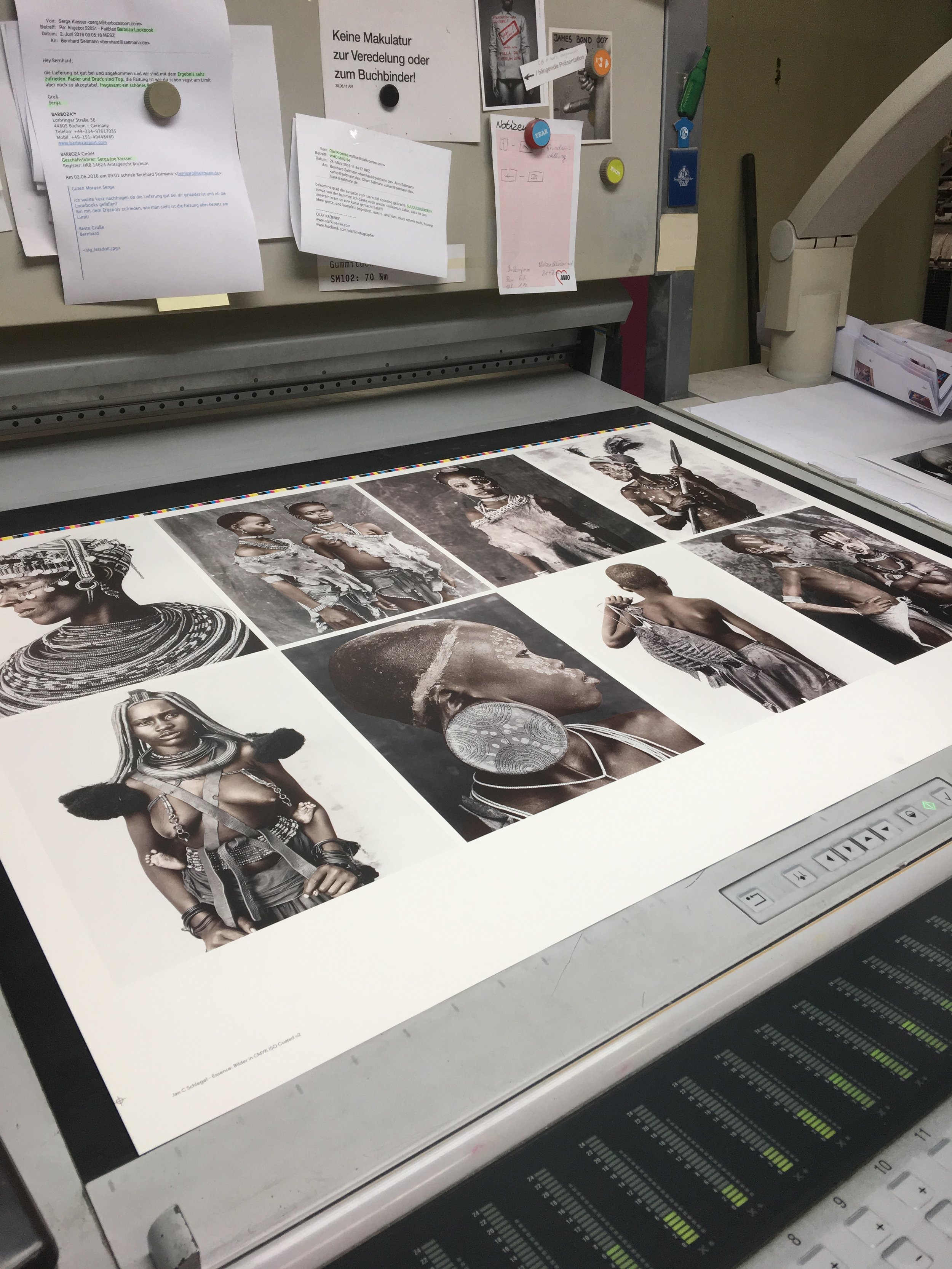

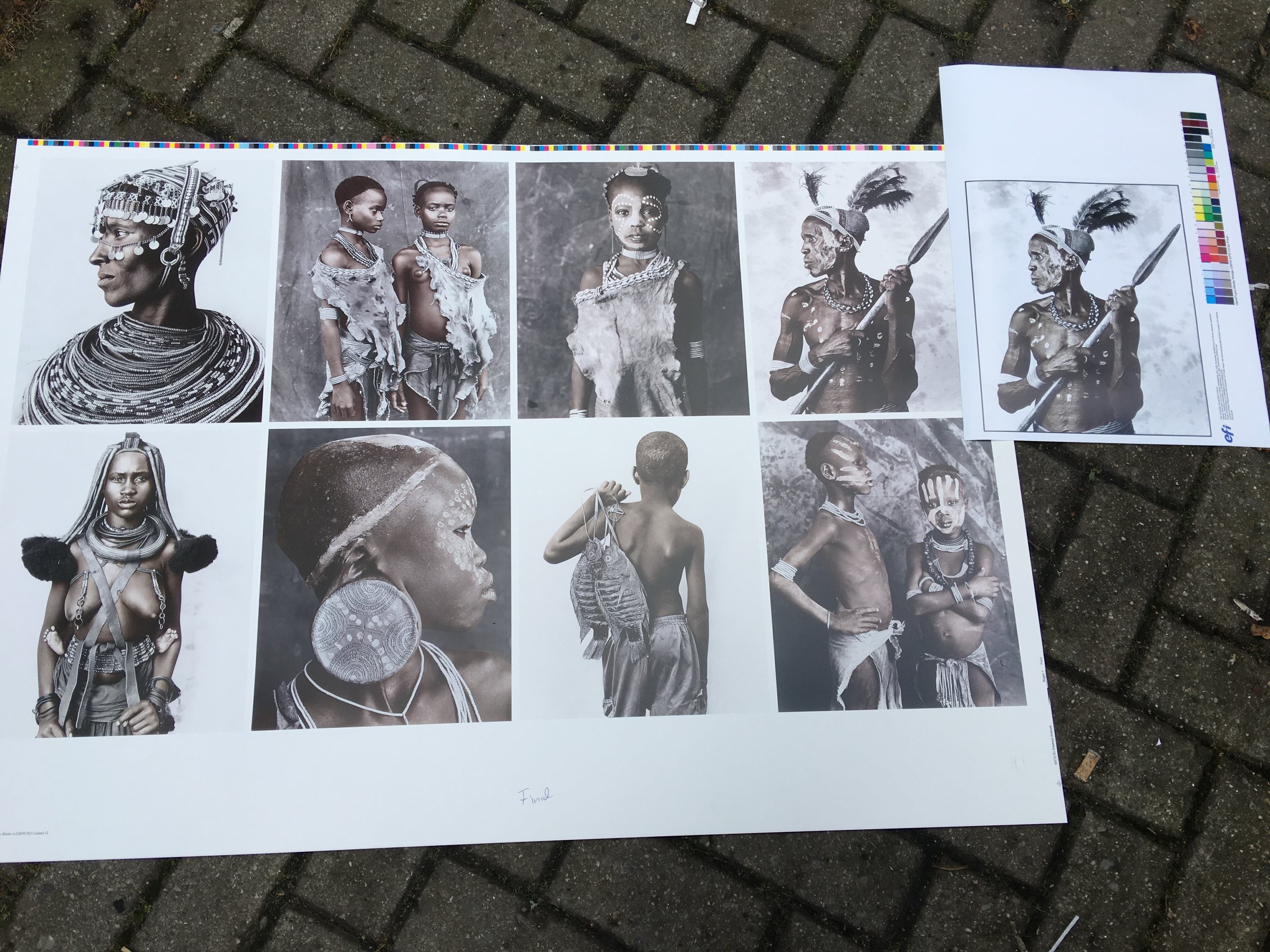

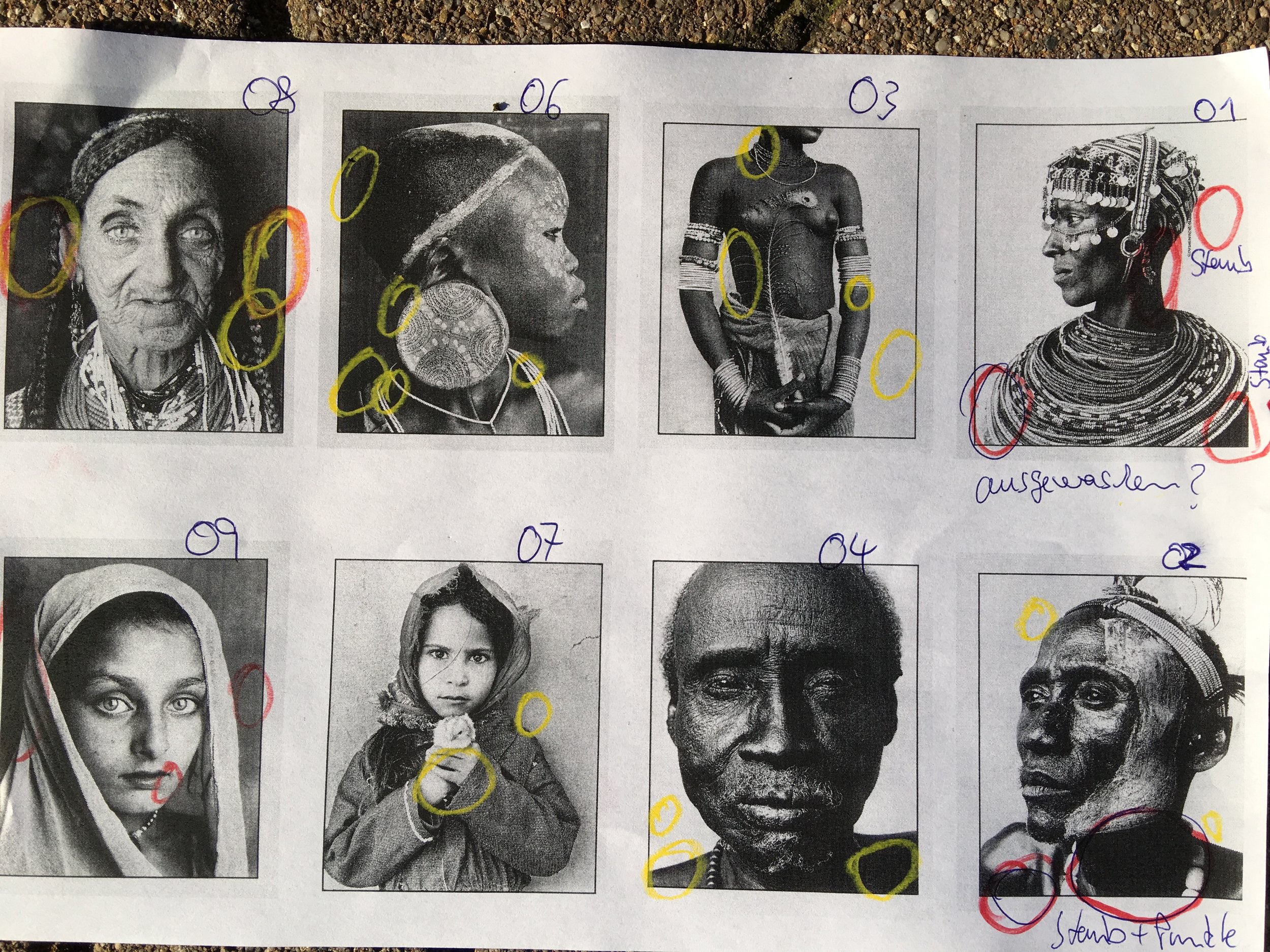
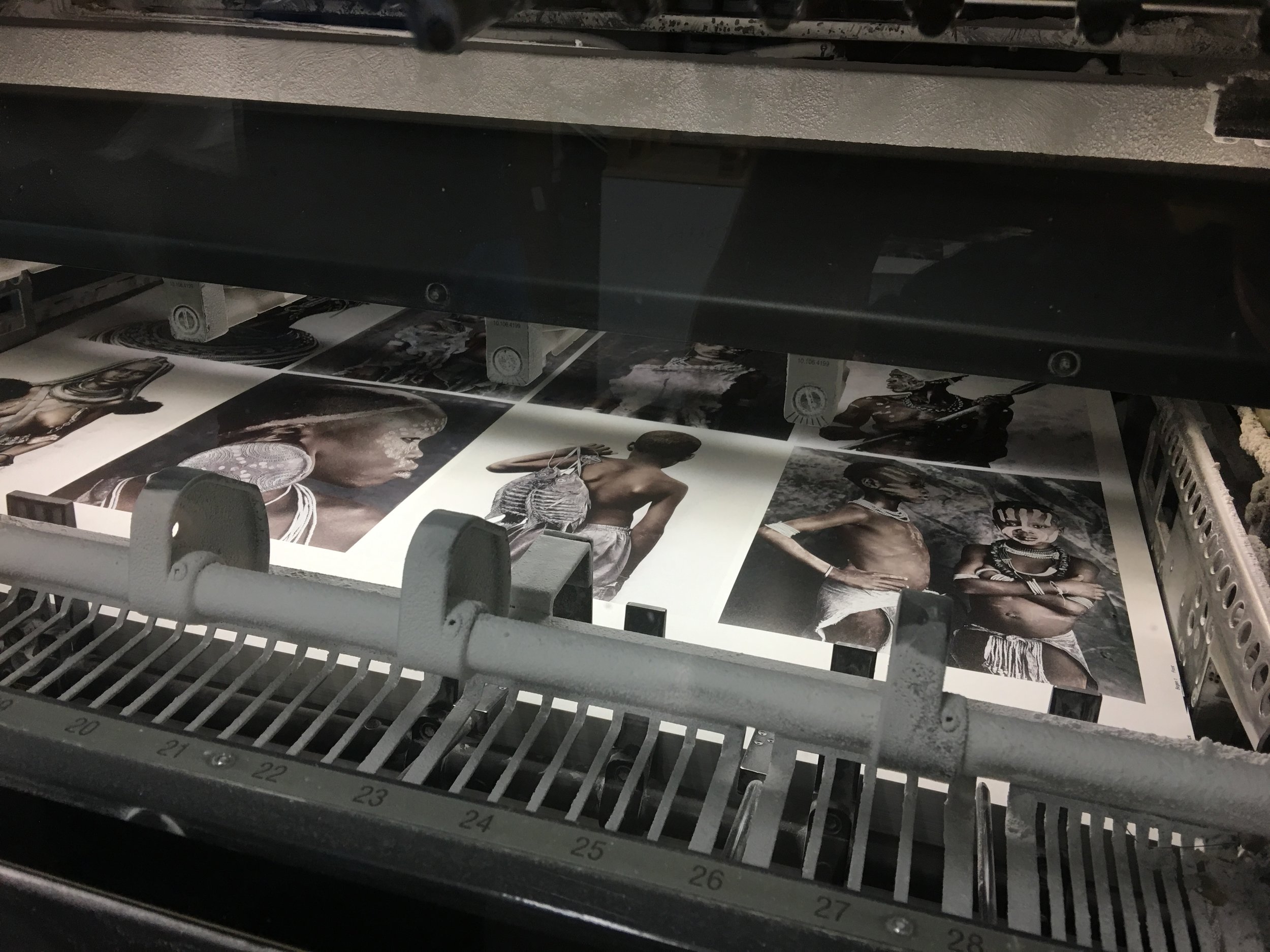
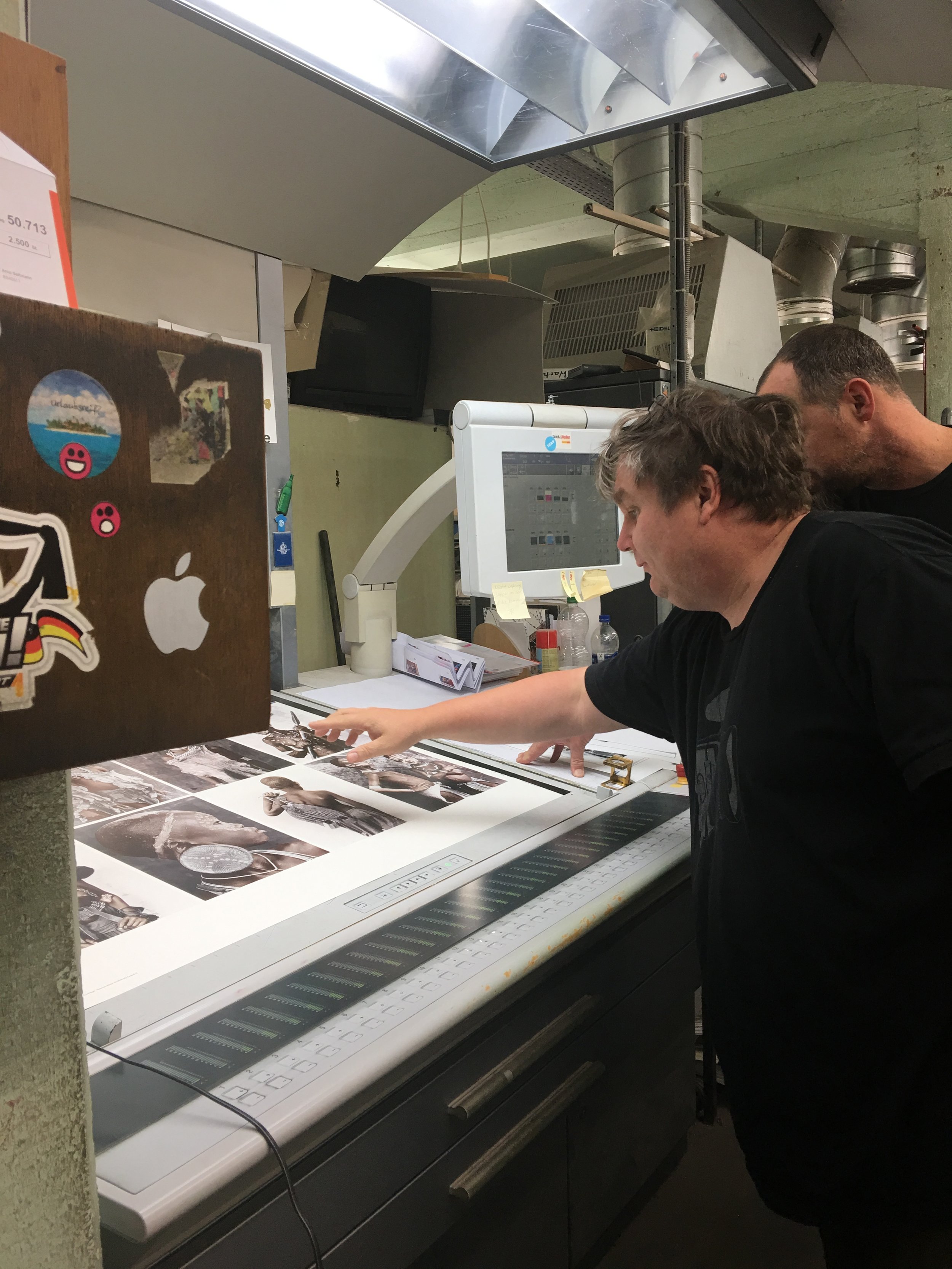
News Report in lokal Nuremberg Newspaper! Love it!
Nürnberger Nachrichten from July 25th 2016
Pictures of the exhibition in Nuremberg at the Wonderland Creative Studios
Beautiful Gallery! it's the first time I show some pictures about my new series "the tribes of our generation".
Opinion: A Disturbing Trend in Photography
About the author: Neal Rantoul is a career artist and educator. After 10 years teaching at Harvard and 30 years as head of the Photo Program at Northeastern University in Boston, he retired from teaching in 2012. You can find out more about him or see his photographic work by visiting his website. This article was also published here.
I’m old. Believe me, I know it. I’ll be 70 in a few months. That fact may make it hard for you to take me seriously, but bear with me for just this post. With age comes wisdom, right? What I want to write here is that I think the field of photography by those making art is changing in a disturbing way. Read on.more
Photographic series or bodies of work are being explicated, explained, contextualized, rationalized, and elevated with text or verbal rationals. You’re thinking: so what? That’s no big deal. Let me start with a short history and then let’s take a look at current practice.
20 or 30 years ago, going to a photo show at MOMA or the Met, SF Modern, ID in Chicago, or even the Whitney often meant you were confronted with a row of framed and matted photographs along with perhaps a brief statement from the show’s curator that gave some biographical data on the photographer or maybe explained in what context the works were being shown. The titles of the work were usually the place and the year the images were made.That was it. The expectation was that the photographs stood on their own, were to be viewed and understood on their own terms, usually as single images sitting next to other single images—think Robert Frank, Lee Friedlander, Harry Callahan, Frederick Sommer, Lew Baltz, even Ansel Adams and Cartier Bresson. Few words were necessary. There were exceptions, of course. For instance, Robert Adams, who had whole reams of text used to flush out his work and build a rational.
Now, go to a show by a recent MFA grad or sit across the table from someone showing you their work at a portfolio review and things are very different. For most work there is absolutely no understanding possible without a written or verbal account of what the photographer is up to. I always have the sense that I am joining the telling of a story in the middle, trying to play catchup. For most works, separate the photographs from the words and you have no ability to comprehend what is going on.
This isn’t always awful, as perhaps it is part of the evolution of the medium into a specialized category that leads to increased specificity and a clearer intent. But, and this is my main point: the photographs often aren’t very good. It’s as though photography has been sublimated to a necessary part of the total, that the words are the priority and the photographs somehow are ancillary or secondary and therefore not needing much attention.
This resides perilously close to using the photographs as illustrations, really another field entirely.
What is this? My theory: most new art photography these days come from MFA grads who have studied the medium, not only its practice (although often not enough) but its theory, its criticism, its analysis. As the medium’s craft has become easier, more fluid and automatic, mastery of the technical and visual has become less important.
Students flowing out of MFA programs now that were started in the 60’s and 70’s are graduating with degrees and thesis works that are equivalent to PHD dissertations (there is no PHD in applied photography) as the MFA is the terminal degree in the discipline. These grads and recent grads are learned, academic, studied, vocal, theoretical, and informed in the medium’s history. They are also “conceptual” in that the thought is formed, the work is made to fit the thesis, and then executed as a package with the written text to go along with it. This can resolve itself in performative works, video and/or photographs with a primary written component and a secondary tier of importance to the photography.
As photography at this level has grown, the treatment of it as an academic pursuit has as well. Very often the craft of the medium is subsumed, indicating the artist has little interest in the inherent qualities of the discipline itself, using it simply as a vehicle for visual communication. In fact he or she may have graduated from just that: a department of visual communication.
This constitutes a “literalization” of the medium or in effect a deconstruction of its inherently visual qualities resulting in an analytical and intellectual final result.
Go to a graduate thesis show and take a look. The students are concerned with issues of identity, gender, developmental and emotional positioning, posturing, physical and emotional abuse, cultural and societal pressure and assumption, human rights, sexual identity, and on and on. Each of these ideas and many others takes on a personal relevance and importance square in the photographer’s aim, as though there is a catharsis that when shared it is assumed to have relevance to others who are there looking at the work. Of course, much of this is narcissism, self-absorption, even making work with blinders on.
Before you label me an old guy with a lack of sympathy for the young and an inability to see the value in younger’s peoples ideas, read on. Joni Mitchell once sung that “the old hate the young” but I have always really liked the young; take my forty years of teaching at the university level that I really enjoyed as a case in point. Youth is vibrancy, endless energy, huge flexibly, and a sense of discovery that is wonderful to be around. But making the assumption that I or any viewer wants to hear the personal story as a prominent component of the art just really gets me going. I do not. I want to be able to look at the art and judge it on its own merits. Presently, I find a good deal of it lacking.
Look, the practice of making pictures used to be hugely craft based. You needed to study photography and the making of pictures hard to be good at it. It used to be difficult to do well. As a professor I seldom saw any student any good at it until they were a couple of years in. Now, the level is higher and proficiency comes without much work. I doubt most students two years into their degree can accurately tell you what ISO is, aperture and shutter speed settings, 18% gray, reciprocity failure, D-Max and so on. You can build the case, of course, that they don’t need to know those things. Put the camera on “P” and fire away.
My point? As photography becomes ubiquitous, as we are all photographers and even the most simple of cameras made today provides stunning results compared to a few years ago, photography is free to explore areas never approached before. That’s all good. But please give me less words and better pictures! I find the story, the text, mostly boring and condescending, telling me how to look at the photographs rather then letting the photographs do the talking.
It’s ironic that as photographs have become easier to make and there are more photographers than ever before making more photographs the pictures are worse.
As Kurt Vonnegut wrote in Slaughterhouse Five when referring to the allies massive bombing campaign of the city of Dresden towards the end of WWII that killed people in the hundreds of thousands:
So it goes.
When Being a Good Photographer Isn’t Enough
I’ve met a lot of bitter photographers over the years, especially as high-end cameras have become cheaper and more accessible. They complain that Photographer A gets more work than Photographer B even though Photographer B’s work is clearly better; or that Photographer C doesn’t get any work even though their work is the best of the three (Side Note: often times the photographer complaining IS Photographer C).
Read More












